
- October 26, 2022
- Academic Advice

15 Benefits of Education That Can Impact Your Future
UOTP Marketing
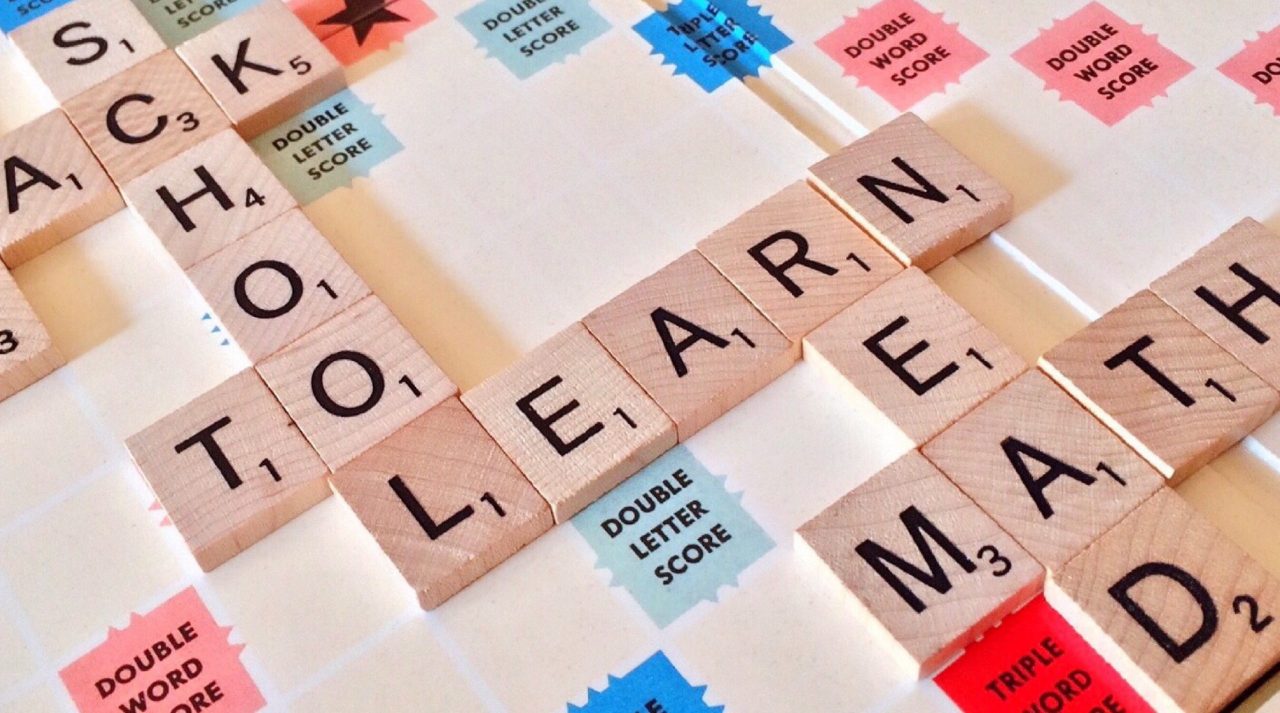
While everyone might have a different definition of education, its importance remains undisputed. By receiving a systematic education, people gain knowledge and develop skills and character traits crucial for a certain standard of life.
While primary and secondary education is compulsory in most countries worldwide, that is not the case with tertiary schooling. Pursuing a college or university degree is a person’s choice based on needs, career preferences, and abilities. Whether a university education is a requirement for your preferred career or not, a college degree can significantly impact your future. If you are considering the various options, you may want to explore different type of degrees offered by educational institutions to align your choice with your needs, career preferences, and abilities.
15 Benefits of Education
Most people agree on the importance of education, but only a fraction of that is truly aware of the impact of education on our lives. Receiving an education has a significant impact not only on our quality of life but on our physical and psychological well-being. Below you will find 15 different benefits of education that can impact your life in the future.
1. Creating More Employment Opportunities
“Finding a job” is probably one of the most common reasons people choose to pursue a college degree, as we are all well aware of the difficulties of landing a good job. In most cases, tens of candidates are applying for the same position, and a college degree can help set you apart from others. In addition, a college education will create more employment opportunities as you will be qualified for more than low-paying and entry-level jobs.
2. Leading to Career Advancement
If you have already joined the workforce and love your job, you might think you don’t need to pursue a college or university education. We are here to tell you that a college degree can have other benefits than just landing you a job. By receiving higher education, you gain the knowledge and skills that will give you a competitive edge and allow you to advance your career in a chosen field.
3. Securing a Better Income

As previously mentioned, a college education can be grounds for career advancement. Advancement in your field comes in the form of a new job title and greater responsibilities—consequently, a higher salary and added benefits. You will also qualify for higher-paying entry-level jobs by getting a higher education degree. As a result, a higher wage can grant you financial stability and improve your quality of life.
4. Developing Critical-Thinking Skills
Higher education equips you with the knowledge and essential skills necessary to join the workforce. One of the most vital skills you will develop when pursuing a college degree is the ability to think critically. Critical thinking skills are an advantage and sometimes even a requirement to succeed in your career. By developing critical-thinking skills, you can improve your work’s quality, solve problems, and prevent possible issues that might arise.
5. Improving Self-Discipline

The amount of work that one has to put in to get a college degree is sometimes precisely what improves one’s self-discipline. When pursuing higher education, you have assignments that you must deliver on time and tests you must study for—all of which require self-discipline. Improved self-discipline will, in turn, help you in your future career by making you a reliable and hardworking team member.
6. Developing Cognitive And Communication Skills
Learning how to communicate with others is a highly valuable skill in the job market and one that will significantly contribute to your career success. Pursuing a university or college degree is a great way to further develop your cognitive and communication skills. During your studies, you will constantly be in contact and collaborate with colleagues and professors, giving you insight into a typical work environment.
7. Promoting Equality And Empowerment
One of the most important benefits of education is probably the promotion of equality and empowerment within society. Higher education can make people more open-minded in accepting others’ ideas and opinions regardless of race, gender, age, etc. In addition, education empowers people through expert knowledge and valuable skills and gives them the mental capacity to make decisions and create a life of their own independently.
8. Providing a Prosperous And Healthy Life

The list of highest-paying careers contains mostly professions that require a higher education degree. This is why one must pursue a college education to land a well-paying job. A high-paying job career has many benefits, including a comfortable life for you and your family, the respect and admiration of your family and friends, etc. Being financially secure will also contribute to your and your family’s overall happiness and quality of life.
Interested in pursuing a degree?
Fill out the form and get all admission information you need regarding your chosen program.
This will only take a moment.
Message Received!
Thank you for reaching out to us. we will review your message and get right back to you within 24 hours. if there is an urgent matter and you need to speak to someone immediately you can call at the following phone number:.
By clicking the Send me more information button above, I represent that I am 18+ years of age, that I have read and agreed to the Terms & Conditions and Privacy Policy , and agree to receive email marketing and phone calls from UOTP. I understand that my consent is not required to apply for online degree enrollment. To speak with a representative without providing consent, please call +1 (202) 274-2300
- We value your privacy.
9. Instilling a Sense of Accomplishment
There are still advantages to a college or university degree, even if we were to take out the “landing a job” benefit. Another great benefit of pursuing a degree is the sense of accomplishment you gain when you obtain your degree. Feeling like you accomplished something important will, in turn, make you more confident in pursuing other things you want in life and getting them.
10. Spreading Awareness
Nowadays, technological advancement has made it possible for people to easily connect and communicate with virtually anyone anywhere in the world. This, of course, includes students in colleges and universities. Getting a college education will, directly and indirectly, expose students to different cultures around the world, thus increasing cultural awareness.
11. Enhancing Productivity
Getting a college degree is a lot of hard work, requiring self-discipline and good time-management skills . Pursuing and obtaining a college degree will improve these skills and qualities in a person. Such essential attributes and skills will make you a valuable employee and asset for the companies you work for as they help enhance your overall productivity.
12. Offering the Opportunity to Socialize And Network

Another way a college education will prepare you for your future career is through socializing and networking. When pursuing a college degree, you are surrounded by other students who will soon enter the same job market as you. Socializing or creating a network with them early on will be a great advantage when pursuing a career or seeking career advancement.
13. Pursuing a Passion
Pursuing a college or university degree in a field you are passionate about is a great way to land a fulfilling career. A college education will allow you to turn your passion into a stable job and income you need to live comfortably. In addition, the specialized knowledge you gain during your studies will help you plunge deeper into the things you love.
14. Opening Your Horizons
Pursuing higher education is a great way to open your horizons regarding knowledge, understanding, or experience. Whether it is the specialized knowledge and understanding you gain, the different things you experience, or the relationships you form, a college education will expose you to things you can’t find elsewhere.
15. Contributing to the Community
Lastly, all the benefits of education mentioned above will make you a better member of society. By receiving higher education and landing a fulfilling and high-paying job, you can then turn your energy into giving back to the community and helping others. Educated people are aware of the role an individual must play in society for it to function well, so they do their part accordingly.
The Bottom Line
There are many ways higher education can impact your future as an individual and a community member. By pursuing a college education, one can become a financially stable, knowledgeable, skilled, and happy individual that will contribute to a better society.
Share it with your friends!
Explore more.

Accounting vs. Finance Degree: Which Major to Choose?

12 Important Bookkeeping Skills You Need for a Successful Career
Recent resources.

9 Benefits of Learning a Second Language

Associate’s vs. Bachelor’s: Which One To Choose?
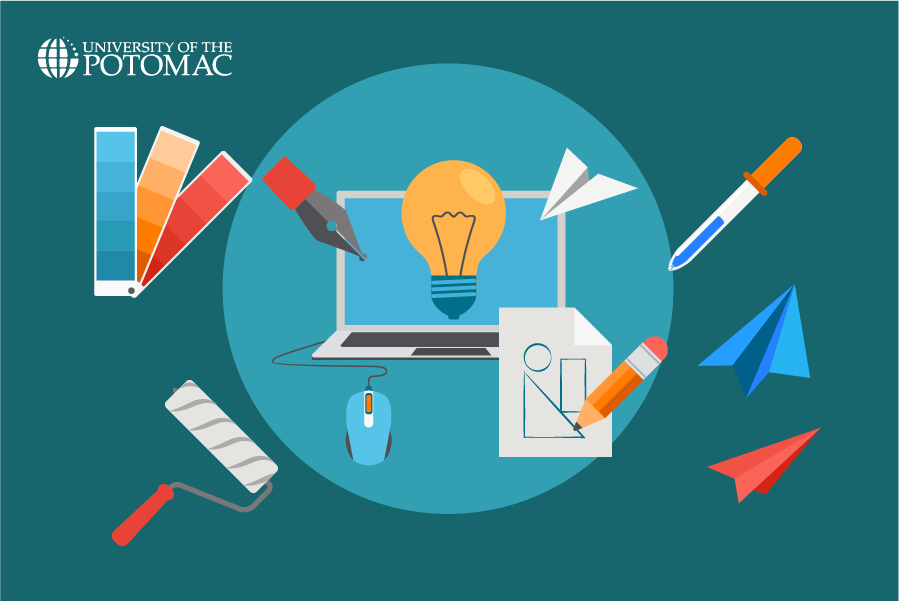
Web Designer vs. Web Developer: What’s the Difference?
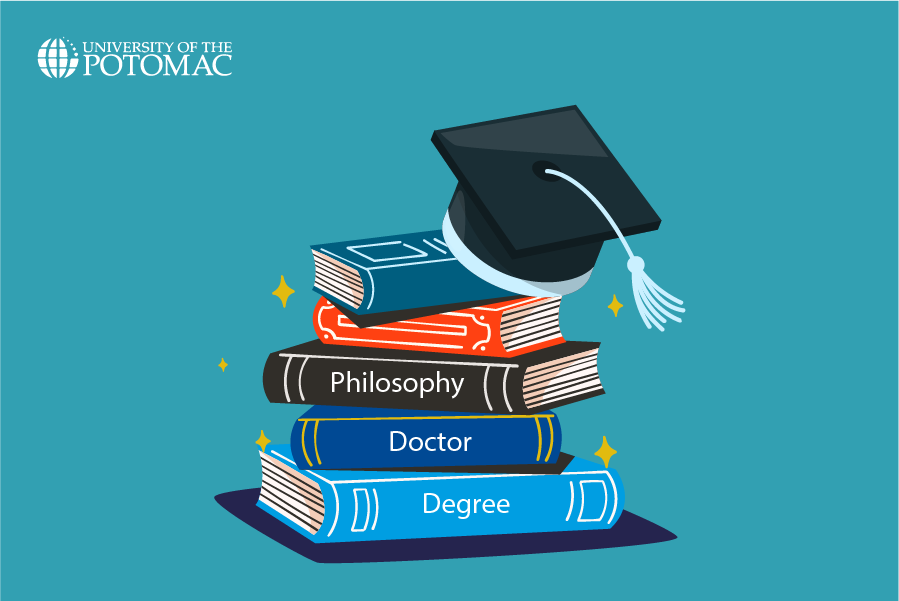
What Does Ph.D. Stand For?
INTERESTED IN LEARNING MORE?
Chat with an Admissions Officer Now!

- Associates Degree
- Bachelors Degrees
- Masters Degrees
- Doctoral Degrees
- Faculty & Staff
- Accreditation
- Student Experience
QUICK LINKS
- Admission Requirements
- Military Students
- Financial Aid
Request More Information
Benefits of education
Education is one of the most important investments a country can make in its future. GPE supports lower-income countries to ensure that every child receives a quality education.
Education is a powerful agent of change, and improves health and livelihoods, contributes to social stability and drives long-term economic growth. Education is also essential to the success of every one of the 17 sustainable development goals .
GPE helps partner countries transform their education systems to ensure that every girl and boy can get the quality education they need to unlock their full potential and contribute to building a better world.
A great education...

Kyrgyz Republic: Preparing children for primary school
Starts early, early childhood education prepares children for future learning.
41% of children are enrolled in pre-primary education in GPE partner countries
Means great teachers
An effective teacher is the most important factor in a student’s learning.
67 million more children have access to quality teachers since 2002
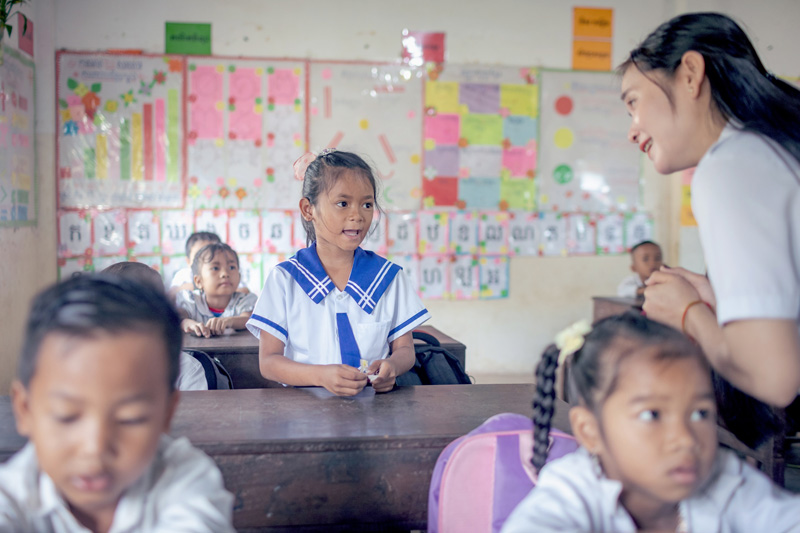
Cambodia: Better teachers produce better students
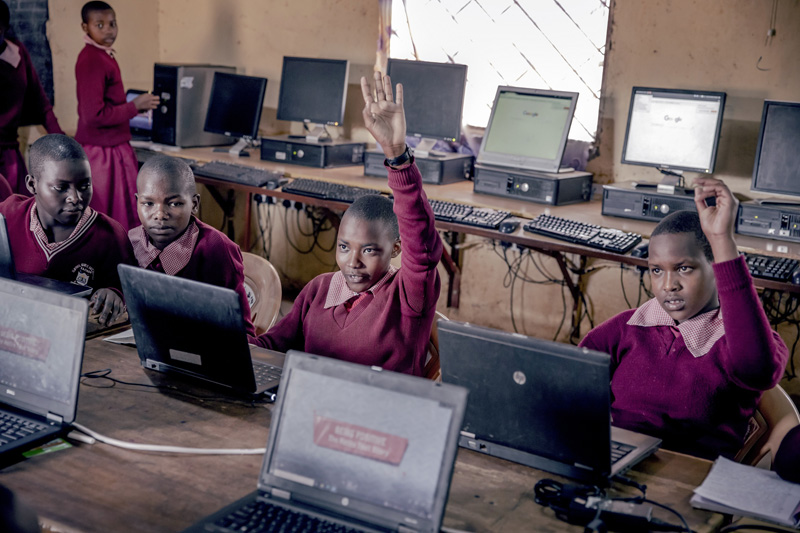
Kenya: How the private sector is supporting opportunities for girls' education
Is equal for girls and boys, keeping girls in school benefits them and their families, communities and countries.
2X the number of girls are on the path of gender equality
Leads to learning
More children than ever are in school, but too many don’t learn enough.
70% of partner countries with data improved learning outcomes between 2010-2015 and 2016-2019
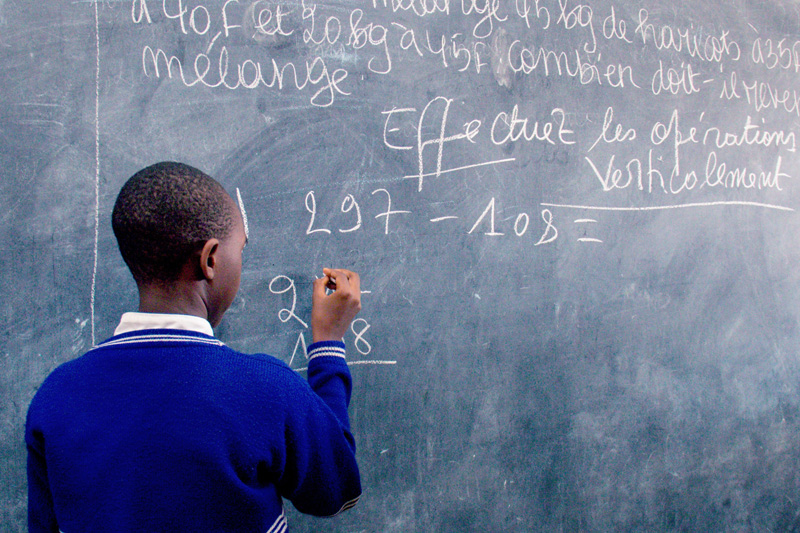
Burundi: Keeping schools accessible for better learning

Kenya: Investing in education for a better future
Is based on data, without accurate data, it is impossible to know how many children are not in school or are not learning.
89% of GPE grants supported EMIS and/or learning assessment systems in 2020
Is backed by a strong system
Gpe transforms education systems to increase the number of children who are in school and learning.
160 million more children are in school in GPE partner countries

Ethiopia: A long-term commitment to education spurs results
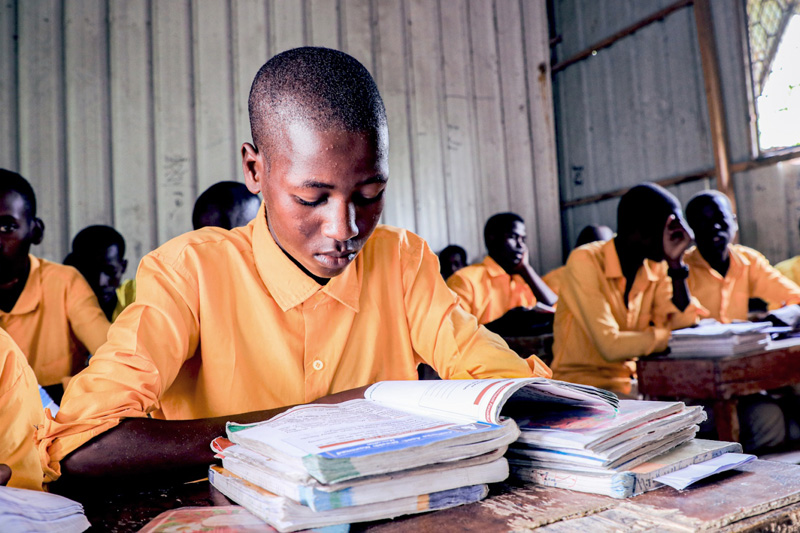
Somalia: Giving more children the opportunity to learn during emergencies
Leaves no one behind, gpe supports countries to build equitable and inclusive education systems where all children can learn in a safe and healthy environment.
US$379M in GPE funding supported activities promoting equity, gender equality and inclusion in 2019
... and can change the world!
When access to education and learning grows, the ripple effects on communities and countries are remarkable.
- 420 million people would be lifted out of poverty with a secondary education
- A child whose mother can read is 50% more likely to live past the age of 5
- One additional year of school can increase a woman’s earnings by up to 20%
- Our Mission
What Is Education For?
Read an excerpt from a new book by Sir Ken Robinson and Kate Robinson, which calls for redesigning education for the future.

What is education for? As it happens, people differ sharply on this question. It is what is known as an “essentially contested concept.” Like “democracy” and “justice,” “education” means different things to different people. Various factors can contribute to a person’s understanding of the purpose of education, including their background and circumstances. It is also inflected by how they view related issues such as ethnicity, gender, and social class. Still, not having an agreed-upon definition of education doesn’t mean we can’t discuss it or do anything about it.
We just need to be clear on terms. There are a few terms that are often confused or used interchangeably—“learning,” “education,” “training,” and “school”—but there are important differences between them. Learning is the process of acquiring new skills and understanding. Education is an organized system of learning. Training is a type of education that is focused on learning specific skills. A school is a community of learners: a group that comes together to learn with and from each other. It is vital that we differentiate these terms: children love to learn, they do it naturally; many have a hard time with education, and some have big problems with school.
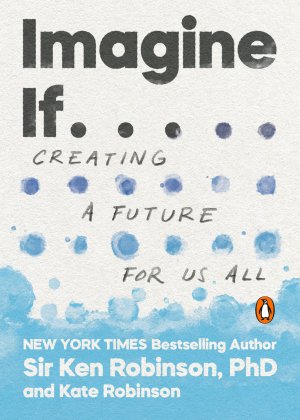
There are many assumptions of compulsory education. One is that young people need to know, understand, and be able to do certain things that they most likely would not if they were left to their own devices. What these things are and how best to ensure students learn them are complicated and often controversial issues. Another assumption is that compulsory education is a preparation for what will come afterward, like getting a good job or going on to higher education.
So, what does it mean to be educated now? Well, I believe that education should expand our consciousness, capabilities, sensitivities, and cultural understanding. It should enlarge our worldview. As we all live in two worlds—the world within you that exists only because you do, and the world around you—the core purpose of education is to enable students to understand both worlds. In today’s climate, there is also a new and urgent challenge: to provide forms of education that engage young people with the global-economic issues of environmental well-being.
This core purpose of education can be broken down into four basic purposes.
Education should enable young people to engage with the world within them as well as the world around them. In Western cultures, there is a firm distinction between the two worlds, between thinking and feeling, objectivity and subjectivity. This distinction is misguided. There is a deep correlation between our experience of the world around us and how we feel. As we explored in the previous chapters, all individuals have unique strengths and weaknesses, outlooks and personalities. Students do not come in standard physical shapes, nor do their abilities and personalities. They all have their own aptitudes and dispositions and different ways of understanding things. Education is therefore deeply personal. It is about cultivating the minds and hearts of living people. Engaging them as individuals is at the heart of raising achievement.
The Universal Declaration of Human Rights emphasizes that “All human beings are born free and equal in dignity and rights,” and that “Education shall be directed to the full development of the human personality and to the strengthening of respect for human rights and fundamental freedoms.” Many of the deepest problems in current systems of education result from losing sight of this basic principle.
Schools should enable students to understand their own cultures and to respect the diversity of others. There are various definitions of culture, but in this context the most appropriate is “the values and forms of behavior that characterize different social groups.” To put it more bluntly, it is “the way we do things around here.” Education is one of the ways that communities pass on their values from one generation to the next. For some, education is a way of preserving a culture against outside influences. For others, it is a way of promoting cultural tolerance. As the world becomes more crowded and connected, it is becoming more complex culturally. Living respectfully with diversity is not just an ethical choice, it is a practical imperative.
There should be three cultural priorities for schools: to help students understand their own cultures, to understand other cultures, and to promote a sense of cultural tolerance and coexistence. The lives of all communities can be hugely enriched by celebrating their own cultures and the practices and traditions of other cultures.
Education should enable students to become economically responsible and independent. This is one of the reasons governments take such a keen interest in education: they know that an educated workforce is essential to creating economic prosperity. Leaders of the Industrial Revolution knew that education was critical to creating the types of workforce they required, too. But the world of work has changed so profoundly since then, and continues to do so at an ever-quickening pace. We know that many of the jobs of previous decades are disappearing and being rapidly replaced by contemporary counterparts. It is almost impossible to predict the direction of advancing technologies, and where they will take us.
How can schools prepare students to navigate this ever-changing economic landscape? They must connect students with their unique talents and interests, dissolve the division between academic and vocational programs, and foster practical partnerships between schools and the world of work, so that young people can experience working environments as part of their education, not simply when it is time for them to enter the labor market.
Education should enable young people to become active and compassionate citizens. We live in densely woven social systems. The benefits we derive from them depend on our working together to sustain them. The empowerment of individuals has to be balanced by practicing the values and responsibilities of collective life, and of democracy in particular. Our freedoms in democratic societies are not automatic. They come from centuries of struggle against tyranny and autocracy and those who foment sectarianism, hatred, and fear. Those struggles are far from over. As John Dewey observed, “Democracy has to be born anew every generation, and education is its midwife.”
For a democratic society to function, it depends upon the majority of its people to be active within the democratic process. In many democracies, this is increasingly not the case. Schools should engage students in becoming active, and proactive, democratic participants. An academic civics course will scratch the surface, but to nurture a deeply rooted respect for democracy, it is essential to give young people real-life democratic experiences long before they come of age to vote.
Eight Core Competencies
The conventional curriculum is based on a collection of separate subjects. These are prioritized according to beliefs around the limited understanding of intelligence we discussed in the previous chapter, as well as what is deemed to be important later in life. The idea of “subjects” suggests that each subject, whether mathematics, science, art, or language, stands completely separate from all the other subjects. This is problematic. Mathematics, for example, is not defined only by propositional knowledge; it is a combination of types of knowledge, including concepts, processes, and methods as well as propositional knowledge. This is also true of science, art, and languages, and of all other subjects. It is therefore much more useful to focus on the concept of disciplines rather than subjects.
Disciplines are fluid; they constantly merge and collaborate. In focusing on disciplines rather than subjects we can also explore the concept of interdisciplinary learning. This is a much more holistic approach that mirrors real life more closely—it is rare that activities outside of school are as clearly segregated as conventional curriculums suggest. A journalist writing an article, for example, must be able to call upon skills of conversation, deductive reasoning, literacy, and social sciences. A surgeon must understand the academic concept of the patient’s condition, as well as the practical application of the appropriate procedure. At least, we would certainly hope this is the case should we find ourselves being wheeled into surgery.
The concept of disciplines brings us to a better starting point when planning the curriculum, which is to ask what students should know and be able to do as a result of their education. The four purposes above suggest eight core competencies that, if properly integrated into education, will equip students who leave school to engage in the economic, cultural, social, and personal challenges they will inevitably face in their lives. These competencies are curiosity, creativity, criticism, communication, collaboration, compassion, composure, and citizenship. Rather than be triggered by age, they should be interwoven from the beginning of a student’s educational journey and nurtured throughout.
From Imagine If: Creating a Future for Us All by Sir Ken Robinson, Ph.D and Kate Robinson, published by Penguin Books, an imprint of Penguin Publishing Group, a division of Penguin Random House, LLC. Copyright © 2022 by the Estate of Sir Kenneth Robinson and Kate Robinson.
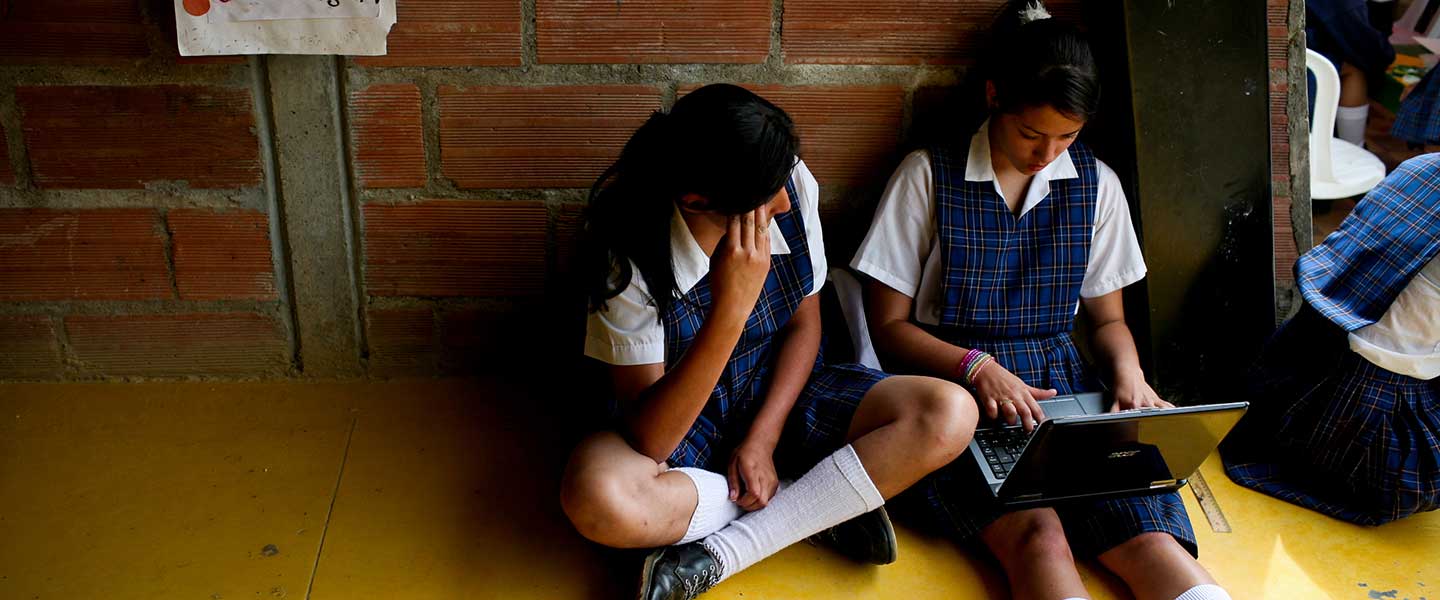
The World Bank Group is the largest financier of education in the developing world, working in 90 countries and committed to helping them reach SDG4: access to inclusive and equitable quality education and lifelong learning opportunities for all by 2030.
Education is a human right, a powerful driver of development, and one of the strongest instruments for reducing poverty and improving health, gender equality, peace, and stability. It delivers large, consistent returns in terms of income, and is the most important factor to ensure equity and inclusion.
For individuals, education promotes employment, earnings, health, and poverty reduction. Globally, there is a 9% increase in hourly earnings for every extra year of schooling . For societies, it drives long-term economic growth, spurs innovation, strengthens institutions, and fosters social cohesion. Education is further a powerful catalyst to climate action through widespread behavior change and skilling for green transitions.
Developing countries have made tremendous progress in getting children into the classroom and more children worldwide are now in school. But learning is not guaranteed, as the 2018 World Development Report (WDR) stressed.
Making smart and effective investments in people’s education is critical for developing the human capital that will end extreme poverty. At the core of this strategy is the need to tackle the learning crisis, put an end to Learning Poverty , and help youth acquire the advanced cognitive, socioemotional, technical and digital skills they need to succeed in today’s world.
In low- and middle-income countries, the share of children living in Learning Poverty (that is, the proportion of 10-year-old children that are unable to read and understand a short age-appropriate text) increased from 57% before the pandemic to an estimated 70% in 2022.
However, learning is in crisis. More than 70 million more people were pushed into poverty during the COVID pandemic, a billion children lost a year of school , and three years later the learning losses suffered have not been recouped . If a child cannot read with comprehension by age 10, they are unlikely to become fluent readers. They will fail to thrive later in school and will be unable to power their careers and economies once they leave school.
The effects of the pandemic are expected to be long-lasting. Analysis has already revealed deep losses, with international reading scores declining from 2016 to 2021 by more than a year of schooling. These losses may translate to a 0.68 percentage point in global GDP growth. The staggering effects of school closures reach beyond learning. This generation of children could lose a combined total of US$21 trillion in lifetime earnings in present value or the equivalent of 17% of today’s global GDP – a sharp rise from the 2021 estimate of a US$17 trillion loss.
Action is urgently needed now – business as usual will not suffice to heal the scars of the pandemic and will not accelerate progress enough to meet the ambitions of SDG 4. We are urging governments to implement ambitious and aggressive Learning Acceleration Programs to get children back to school, recover lost learning, and advance progress by building better, more equitable and resilient education systems.
Last Updated: Mar 25, 2024
The World Bank’s global education strategy is centered on ensuring learning happens – for everyone, everywhere. Our vision is to ensure that everyone can achieve her or his full potential with access to a quality education and lifelong learning. To reach this, we are helping countries build foundational skills like literacy, numeracy, and socioemotional skills – the building blocks for all other learning. From early childhood to tertiary education and beyond – we help children and youth acquire the skills they need to thrive in school, the labor market and throughout their lives.
Investing in the world’s most precious resource – people – is paramount to ending poverty on a livable planet. Our experience across more than 100 countries bears out this robust connection between human capital, quality of life, and economic growth: when countries strategically invest in people and the systems designed to protect and build human capital at scale, they unlock the wealth of nations and the potential of everyone.
Building on this, the World Bank supports resilient, equitable, and inclusive education systems that ensure learning happens for everyone. We do this by generating and disseminating evidence, ensuring alignment with policymaking processes, and bridging the gap between research and practice.
The World Bank is the largest source of external financing for education in developing countries, with a portfolio of about $26 billion in 94 countries including IBRD, IDA and Recipient-Executed Trust Funds. IDA operations comprise 62% of the education portfolio.
The investment in FCV settings has increased dramatically and now accounts for 26% of our portfolio.
World Bank projects reach at least 425 million students -one-third of students in low- and middle-income countries.
The World Bank’s Approach to Education
Five interrelated pillars of a well-functioning education system underpin the World Bank’s education policy approach:
- Learners are prepared and motivated to learn;
- Teachers are prepared, skilled, and motivated to facilitate learning and skills acquisition;
- Learning resources (including education technology) are available, relevant, and used to improve teaching and learning;
- Schools are safe and inclusive; and
- Education Systems are well-managed, with good implementation capacity and adequate financing.
The Bank is already helping governments design and implement cost-effective programs and tools to build these pillars.
Our Principles:
- We pursue systemic reform supported by political commitment to learning for all children.
- We focus on equity and inclusion through a progressive path toward achieving universal access to quality education, including children and young adults in fragile or conflict affected areas , those in marginalized and rural communities, girls and women , displaced populations, students with disabilities , and other vulnerable groups.
- We focus on results and use evidence to keep improving policy by using metrics to guide improvements.
- We want to ensure financial commitment commensurate with what is needed to provide basic services to all.
- We invest wisely in technology so that education systems embrace and learn to harness technology to support their learning objectives.
Laying the groundwork for the future
Country challenges vary, but there is a menu of options to build forward better, more resilient, and equitable education systems.
Countries are facing an education crisis that requires a two-pronged approach: first, supporting actions to recover lost time through remedial and accelerated learning; and, second, building on these investments for a more equitable, resilient, and effective system.
Recovering from the learning crisis must be a political priority, backed with adequate financing and the resolve to implement needed reforms. Domestic financing for education over the last two years has not kept pace with the need to recover and accelerate learning. Across low- and lower-middle-income countries, the average share of education in government budgets fell during the pandemic , and in 2022 it remained below 2019 levels.
The best chance for a better future is to invest in education and make sure each dollar is put toward improving learning. In a time of fiscal pressure, protecting spending that yields long-run gains – like spending on education – will maximize impact. We still need more and better funding for education. Closing the learning gap will require increasing the level, efficiency, and equity of education spending—spending smarter is an imperative.
- Education technology can be a powerful tool to implement these actions by supporting teachers, children, principals, and parents; expanding accessible digital learning platforms, including radio/ TV / Online learning resources; and using data to identify and help at-risk children, personalize learning, and improve service delivery.
Looking ahead
We must seize this opportunity to reimagine education in bold ways. Together, we can build forward better more equitable, effective, and resilient education systems for the world’s children and youth.
Accelerating Improvements
Supporting countries in establishing time-bound learning targets and a focused education investment plan, outlining actions and investments geared to achieve these goals.
Launched in 2020, the Accelerator Program works with a set of countries to channel investments in education and to learn from each other. The program coordinates efforts across partners to ensure that the countries in the program show improvements in foundational skills at scale over the next three to five years. These investment plans build on the collective work of multiple partners, and leverage the latest evidence on what works, and how best to plan for implementation. Countries such as Brazil (the state of Ceará) and Kenya have achieved dramatic reductions in learning poverty over the past decade at scale, providing useful lessons, even as they seek to build on their successes and address remaining and new challenges.
Universalizing Foundational Literacy
Readying children for the future by supporting acquisition of foundational skills – which are the gateway to other skills and subjects.
The Literacy Policy Package (LPP) consists of interventions focused specifically on promoting acquisition of reading proficiency in primary school. These include assuring political and technical commitment to making all children literate; ensuring effective literacy instruction by supporting teachers; providing quality, age-appropriate books; teaching children first in the language they speak and understand best; and fostering children’s oral language abilities and love of books and reading.
Advancing skills through TVET and Tertiary
Ensuring that individuals have access to quality education and training opportunities and supporting links to employment.
Tertiary education and skills systems are a driver of major development agendas, including human capital, climate change, youth and women’s empowerment, and jobs and economic transformation. A comprehensive skill set to succeed in the 21st century labor market consists of foundational and higher order skills, socio-emotional skills, specialized skills, and digital skills. Yet most countries continue to struggle in delivering on the promise of skills development.
The World Bank is supporting countries through efforts that address key challenges including improving access and completion, adaptability, quality, relevance, and efficiency of skills development programs. Our approach is via multiple channels including projects, global goods, as well as the Tertiary Education and Skills Program . Our recent reports including Building Better Formal TVET Systems and STEERing Tertiary Education provide a way forward for how to improve these critical systems.
Addressing Climate Change
Mainstreaming climate education and investing in green skills, research and innovation, and green infrastructure to spur climate action and foster better preparedness and resilience to climate shocks.
Our approach recognizes that education is critical for achieving effective, sustained climate action. At the same time, climate change is adversely impacting education outcomes. Investments in education can play a huge role in building climate resilience and advancing climate mitigation and adaptation. Climate change education gives young people greater awareness of climate risks and more access to tools and solutions for addressing these risks and managing related shocks. Technical and vocational education and training can also accelerate a green economic transformation by fostering green skills and innovation. Greening education infrastructure can help mitigate the impact of heat, pollution, and extreme weather on learning, while helping address climate change.
Examples of this work are projects in Nigeria (life skills training for adolescent girls), Vietnam (fostering relevant scientific research) , and Bangladesh (constructing and retrofitting schools to serve as cyclone shelters).
Strengthening Measurement Systems
Enabling countries to gather and evaluate information on learning and its drivers more efficiently and effectively.
The World Bank supports initiatives to help countries effectively build and strengthen their measurement systems to facilitate evidence-based decision-making. Examples of this work include:
(1) The Global Education Policy Dashboard (GEPD) : This tool offers a strong basis for identifying priorities for investment and policy reforms that are suited to each country context by focusing on the three dimensions of practices, policies, and politics.
- Highlights gaps between what the evidence suggests is effective in promoting learning and what is happening in practice in each system; and
- Allows governments to track progress as they act to close the gaps.
The GEPD has been implemented in 13 education systems already – Peru, Rwanda, Jordan, Ethiopia, Madagascar, Mozambique, Islamabad, Khyber Pakhtunkhwa, Sierra Leone, Niger, Gabon, Jordan and Chad – with more expected by the end of 2024.
(2) Learning Assessment Platform (LeAP) : LeAP is a one-stop shop for knowledge, capacity-building tools, support for policy dialogue, and technical staff expertise to support student achievement measurement and national assessments for better learning.
Supporting Successful Teachers
Helping systems develop the right selection, incentives, and support to the professional development of teachers.
Currently, the World Bank Education Global Practice has over 160 active projects supporting over 18 million teachers worldwide, about a third of the teacher population in low- and middle-income countries. In 12 countries alone, these projects cover 16 million teachers, including all primary school teachers in Ethiopia and Turkey, and over 80% in Bangladesh, Pakistan, and Vietnam.
A World Bank-developed classroom observation tool, Teach, was designed to capture the quality of teaching in low- and middle-income countries. It is now 3.6 million students.
While Teach helps identify patterns in teacher performance, Coach leverages these insights to support teachers to improve their teaching practice through hands-on in-service teacher professional development (TPD).
Our recent report on Making Teacher Policy Work proposes a practical framework to uncover the black box of effective teacher policy and discusses the factors that enable their scalability and sustainability.
Supporting Education Finance Systems
Strengthening country financing systems to mobilize resources for education and make better use of their investments in education.
Our approach is to bring together multi-sectoral expertise to engage with ministries of education and finance and other stakeholders to develop and implement effective and efficient public financial management systems; build capacity to monitor and evaluate education spending, identify financing bottlenecks, and develop interventions to strengthen financing systems; build the evidence base on global spending patterns and the magnitude and causes of spending inefficiencies; and develop diagnostic tools as public goods to support country efforts.
Working in Fragile, Conflict, and Violent (FCV) Contexts
The massive and growing global challenge of having so many children living in conflict and violent situations requires a response at the same scale and scope. Our education engagement in the Fragility, Conflict and Violence (FCV) context, which stands at US$5.35 billion, has grown rapidly in recent years, reflecting the ever-increasing importance of the FCV agenda in education. Indeed, these projects now account for more than 25% of the World Bank education portfolio.
Education is crucial to minimizing the effects of fragility and displacement on the welfare of youth and children in the short-term and preventing the emergence of violent conflict in the long-term.
Support to Countries Throughout the Education Cycle
Our support to countries covers the entire learning cycle, to help shape resilient, equitable, and inclusive education systems that ensure learning happens for everyone.
The ongoing Supporting Egypt Education Reform project , 2018-2025, supports transformational reforms of the Egyptian education system, by improving teaching and learning conditions in public schools. The World Bank has invested $500 million in the project focused on increasing access to quality kindergarten, enhancing the capacity of teachers and education leaders, developing a reliable student assessment system, and introducing the use of modern technology for teaching and learning. Specifically, the share of Egyptian 10-year-old students, who could read and comprehend at the global minimum proficiency level, increased to 45 percent in 2021.
In Nigeria , the $75 million Edo Basic Education Sector and Skills Transformation (EdoBESST) project, running from 2020-2024, is focused on improving teaching and learning in basic education. Under the project, which covers 97 percent of schools in the state, there is a strong focus on incorporating digital technologies for teachers. They were equipped with handheld tablets with structured lesson plans for their classes. Their coaches use classroom observation tools to provide individualized feedback. Teacher absence has reduced drastically because of the initiative. Over 16,000 teachers were trained through the project, and the introduction of technology has also benefited students.
Through the $235 million School Sector Development Program in Nepal (2017-2022), the number of children staying in school until Grade 12 nearly tripled, and the number of out-of-school children fell by almost seven percent. During the pandemic, innovative approaches were needed to continue education. Mobile phone penetration is high in the country. More than four in five households in Nepal have mobile phones. The project supported an educational service that made it possible for children with phones to connect to local radio that broadcast learning programs.
From 2017-2023, the $50 million Strengthening of State Universities in Chile project has made strides to improve quality and equity at state universities. The project helped reduce dropout: the third-year dropout rate fell by almost 10 percent from 2018-2022, keeping more students in school.
The World Bank’s first Program-for-Results financing in education was through a $202 million project in Tanzania , that ran from 2013-2021. The project linked funding to results and aimed to improve education quality. It helped build capacity, and enhanced effectiveness and efficiency in the education sector. Through the project, learning outcomes significantly improved alongside an unprecedented expansion of access to education for children in Tanzania. From 2013-2019, an additional 1.8 million students enrolled in primary schools. In 2019, the average reading speed for Grade 2 students rose to 22.3 words per minute, up from 17.3 in 2017. The project laid the foundation for the ongoing $500 million BOOST project , which supports over 12 million children to enroll early, develop strong foundational skills, and complete a quality education.
The $40 million Cambodia Secondary Education Improvement project , which ran from 2017-2022, focused on strengthening school-based management, upgrading teacher qualifications, and building classrooms in Cambodia, to improve learning outcomes, and reduce student dropout at the secondary school level. The project has directly benefited almost 70,000 students in 100 target schools, and approximately 2,000 teachers and 600 school administrators received training.
The World Bank is co-financing the $152.80 million Yemen Restoring Education and Learning Emergency project , running from 2020-2024, which is implemented through UNICEF, WFP, and Save the Children. It is helping to maintain access to basic education for many students, improve learning conditions in schools, and is working to strengthen overall education sector capacity. In the time of crisis, the project is supporting teacher payments and teacher training, school meals, school infrastructure development, and the distribution of learning materials and school supplies. To date, almost 600,000 students have benefited from these interventions.
The $87 million Providing an Education of Quality in Haiti project supported approximately 380 schools in the Southern region of Haiti from 2016-2023. Despite a highly challenging context of political instability and recurrent natural disasters, the project successfully supported access to education for students. The project provided textbooks, fresh meals, and teacher training support to 70,000 students, 3,000 teachers, and 300 school directors. It gave tuition waivers to 35,000 students in 118 non-public schools. The project also repaired 19 national schools damaged by the 2021 earthquake, which gave 5,500 students safe access to their schools again.
In 2013, just 5% of the poorest households in Uzbekistan had children enrolled in preschools. Thanks to the Improving Pre-Primary and General Secondary Education Project , by July 2019, around 100,000 children will have benefitted from the half-day program in 2,420 rural kindergartens, comprising around 49% of all preschool educational institutions, or over 90% of rural kindergartens in the country.
In addition to working closely with governments in our client countries, the World Bank also works at the global, regional, and local levels with a range of technical partners, including foundations, non-profit organizations, bilaterals, and other multilateral organizations. Some examples of our most recent global partnerships include:
UNICEF, UNESCO, FCDO, USAID, Bill & Melinda Gates Foundation: Coalition for Foundational Learning
The World Bank is working closely with UNICEF, UNESCO, FCDO, USAID, and the Bill & Melinda Gates Foundation as the Coalition for Foundational Learning to advocate and provide technical support to ensure foundational learning. The World Bank works with these partners to promote and endorse the Commitment to Action on Foundational Learning , a global network of countries committed to halving the global share of children unable to read and understand a simple text by age 10 by 2030.
Australian Aid, Bernard van Leer Foundation, Bill & Melinda Gates Foundation, Canada, Echida Giving, FCDO, German Cooperation, William & Flora Hewlett Foundation, Conrad Hilton Foundation, LEGO Foundation, Porticus, USAID: Early Learning Partnership
The Early Learning Partnership (ELP) is a multi-donor trust fund, housed at the World Bank. ELP leverages World Bank strengths—a global presence, access to policymakers and strong technical analysis—to improve early learning opportunities and outcomes for young children around the world.
We help World Bank teams and countries get the information they need to make the case to invest in Early Childhood Development (ECD), design effective policies and deliver impactful programs. At the country level, ELP grants provide teams with resources for early seed investments that can generate large financial commitments through World Bank finance and government resources. At the global level, ELP research and special initiatives work to fill knowledge gaps, build capacity and generate public goods.
UNESCO, UNICEF: Learning Data Compact
UNESCO, UNICEF, and the World Bank have joined forces to close the learning data gaps that still exist and that preclude many countries from monitoring the quality of their education systems and assessing if their students are learning. The three organizations have agreed to a Learning Data Compact , a commitment to ensure that all countries, especially low-income countries, have at least one quality measure of learning by 2025, supporting coordinated efforts to strengthen national assessment systems.
UNESCO Institute for Statistics (UIS): Learning Poverty Indicator
Aimed at measuring and urging attention to foundational literacy as a prerequisite to achieve SDG4, this partnership was launched in 2019 to help countries strengthen their learning assessment systems, better monitor what students are learning in internationally comparable ways and improve the breadth and quality of global data on education.
FCDO, Bill & Melinda Gates Foundation: EdTech Hub
Supported by the UK government’s Foreign, Commonwealth & Development Office (FCDO), in partnership with the Bill & Melinda Gates Foundation, the EdTech Hub is aimed at improving the quality of ed-tech investments. The Hub launched a rapid response Helpdesk service to provide just-in-time advisory support to 70 low- and middle-income countries planning education technology and remote learning initiatives.
MasterCard Foundation
Our Tertiary Education and Skills global program, launched with support from the Mastercard Foundation, aims to prepare youth and adults for the future of work and society by improving access to relevant, quality, equitable reskilling and post-secondary education opportunities. It is designed to reframe, reform, and rebuild tertiary education and skills systems for the digital and green transformation.
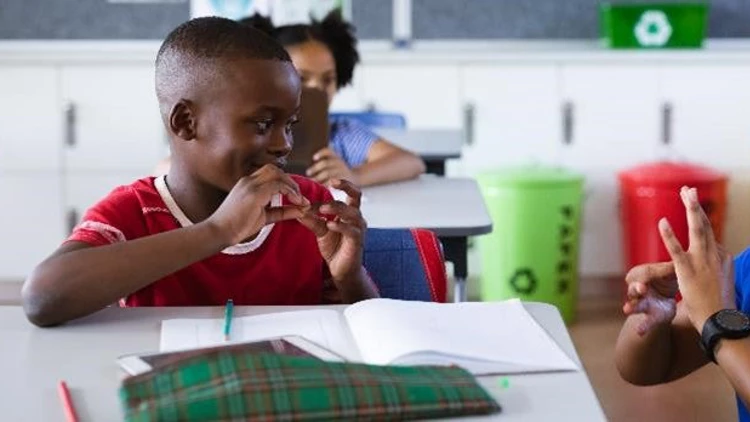
The “how to” of inclusive education policy design
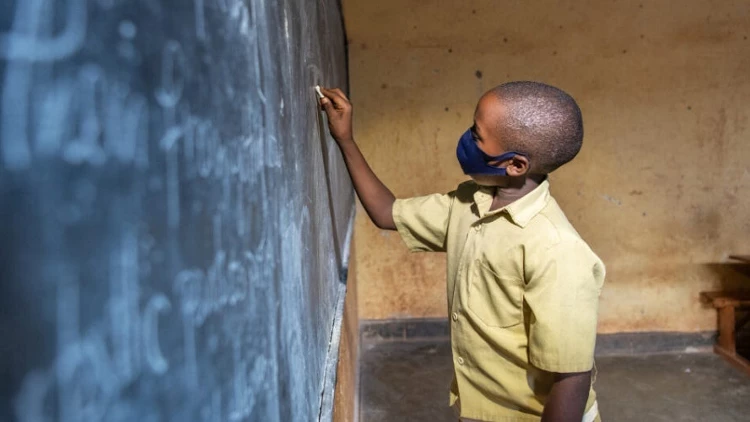
Including refugees in national education systems

How generative AI can enrich teaching and learning
Areas of focus.
Digital Technologies
Early Childhood Development
Education Data & Measurement
Education Finance
Education in Fragile, Conflict & Violence Contexts
Girls’ Education
Higher Education
Inclusive Education
Initiatives
- Show More +
- Tertiary Education and Skills Program
- Service Delivery Indicators
- Evoke: Transforming education to empower youth
- Global Education Policy Dashboard
- Global Education Evidence Advisory Panel
- Show Less -
Collapse and Recovery: How the COVID-19 Pandemic Eroded Human Capital and What to Do About It
BROCHURES & FACT SHEETS
Publication: Realizing Education's Promise: A World Bank Retrospective – August 2023
Education and Climate Change flyer - November 2022
Learning Losses Brochure - October 2022
World Bank Group Education Fact Sheet - September 2022
STAY CONNECTED
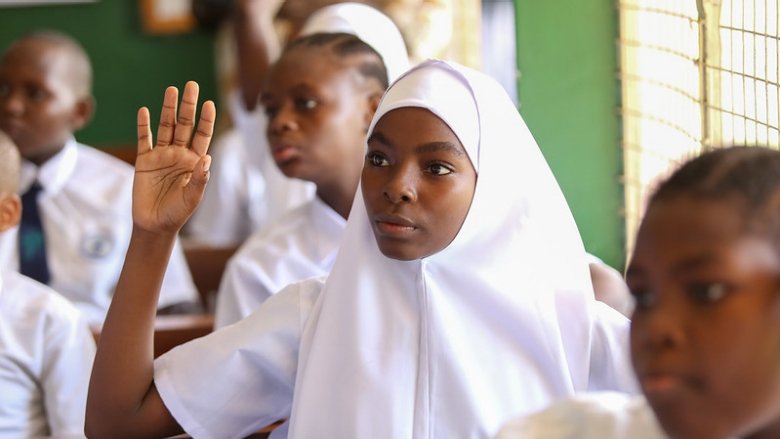
Human Development Topics
Around the bank group.
Find out what the Bank Group's branches are doing in education
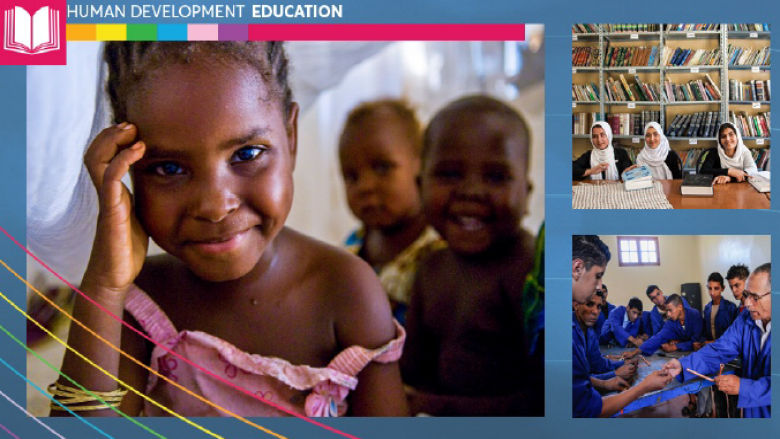
Global Education Newsletter - March 2024
What's happening in the World Bank Education Global Practice? Read to learn more.
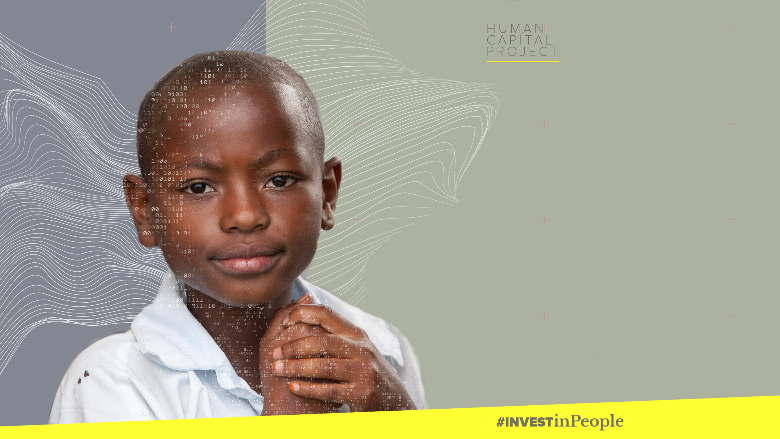
Human Capital Project
The Human Capital Project is a global effort to accelerate more and better investments in people for greater equity and economic growth.

Impact Evaluations
Research that measures the impact of education policies to improve education in low and middle income countries.
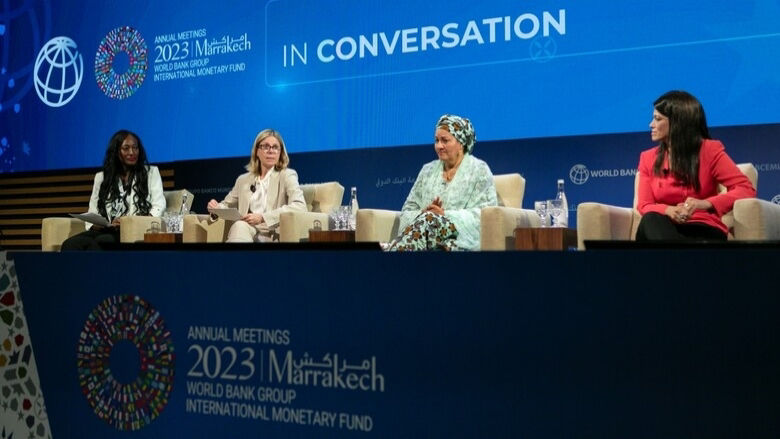
Investing in People for a Livable Planet
Global thought leaders came together to champion investments in people to eradicate poverty on a livable planet.
Additional Resources
This site uses cookies to optimize functionality and give you the best possible experience. If you continue to navigate this website beyond this page, cookies will be placed on your browser. To learn more about cookies, click here .
- Current Students
- Faculty / Staff
- Paying for College
- Alumni Services
- Partnerships
- Program Finder
- Affordable, Flexible, Accessible
- Distance Education
- All Online Courses & Degrees
- Baccalaureate Online
- Graduate Online
- Start Dates
- Admissions, Costs & Aid
- Faculty and Contacts
- Academic and Career Support
- Student Testimonials
- Distance Education Advantage
- About Hybrid Learning
- Hybrid Learning Degrees
- Admissions Requirements
- Top Destination Courses
- Student Life
- Academic Support
- Academic Calendar
- Faculty & Contacts
- Technical Institute for Environmental Professions
- Term Calendar
- Sustainable Ventures
- Careers & Outcomes
- About Unity
- Office of the President
- Announcing Our Evolution
- Sustainable Achievements & Initiatives
- Reinventing College
- Extended Reality (XR)
- Commencement
- Give to Unity Environmental University
- Institutional Communications
- Unity Environmental University News

Home / News / Why Is Education Important? The Power Of An Educated Society

Why Is Education Important? The Power Of An Educated Society
Looking for an answer to the question of why is education important? We address this query with a focus on how education can transform society through the way we interact with our environment.
Whether you are a student, a parent, or someone who values educational attainment, you may be wondering how education can provide quality life to a society beyond the obvious answer of acquiring knowledge and economic growth. Continue reading as we discuss the importance of education not just for individuals but for society as a whole.
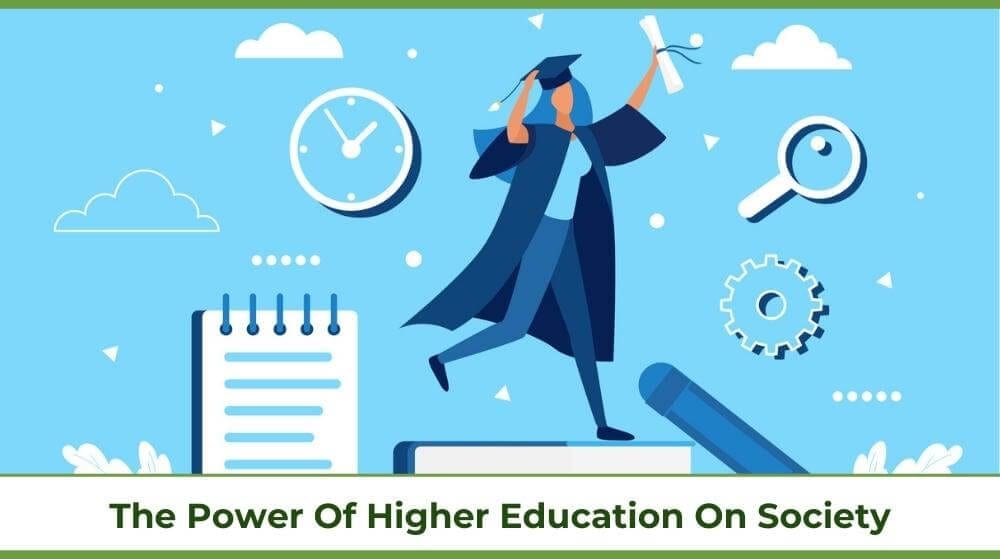
Harness the power of education to build a more sustainable modern society with a degree from Unity Environmental University .
How Education Is Power: The Importance Of Education In Society
Why is education so important? Nelson Mandela famously said, “Education is the most powerful weapon which you can use to change the world.” An educated society is better equipped to tackle the challenges that face modern America, including:
- Climate change
- Social justice
- Economic inequality
Education is not just about learning to read and do math operations. Of course, gaining knowledge and practical skills is part of it, but education is also about values and critical thinking. It’s about finding our place in society in a meaningful way.
Environmental Stewardship
A study from 2022 found that people who belong to an environmental stewardship organization, such as the Leave No Trace Center for Outdoor Ethics, are likely to have a higher education level than those who do not. This suggests that quality education can foster a sense of responsibility towards the environment.
With the effects of climate change becoming increasingly alarming, this particular importance of education is vital to the health, safety, and longevity of our society. Higher learning institutions can further encourage environmental stewardship by adopting a framework of sustainability science .

The Economic Benefits Of Education
Higher education can lead to better job opportunities and higher income. On average, a person with a bachelor’s degree will make $765,000 more in their lifetime than someone with no degree. Even with the rising costs of tuition, investment in higher education pays off in the long run. In 2020, the return on investment (ROI) for a college degree was estimated to be 13.5% to 35.9% .
Green jobs like environmental science technicians and solar panel installers have high demand projections for the next decade. Therefore, degrees that will prepare you for one of these careers will likely yield a high ROI. And, many of these jobs only require an associate’s degree or certificate , which means lower overall education costs.
Unity helps students maximize their ROI with real-world experience in the field as an integral part of every degree program.
10 Reasons Why School Is Important
Education is not just an individual pursuit but also a societal one. In compiling these reasons, we focused on the question, “How does education benefit society?” Overall, higher education has the power to transform:
- Individuals’ sense of self
- Interpersonal relationships
- Social communities
- Professional communities
Cognitive Development
Neuroscience research has proven that the brain is a muscle that can retain its neuroplasticity throughout life. However, like other muscles, it must receive continual exercise to remain strong. Higher education allows people of any age to improve their higher-level cognitive abilities like problem-solving and decision-making. This can make many parts of life feel more manageable and help society run smoothly.
Emotional Intelligence
Emotional intelligence is key to workplace success. Studies show that people with emotional intelligence exhibit more:
- Self-awareness
- Willingness to try new things
- Innovative thinking
- Active listening
- Collaboration skills
- Problem-solving abilities
By attending higher education institutions that value these soft skills, students can improve their emotional intelligence as part of their career development in college.
Technological Literacy
Many careers in today’s job market use advanced technology. To prepare for these jobs, young people likely won’t have access to these technologies to practice on their own. That’s part of why so many STEM career paths require degrees. It’s essential to gain technical knowledge and skills through a certified program to safely use certain technologies. And, educated scientists are more likely to make new technological discoveries .
Cultural Awareness
Education exposes individuals to different cultures and perspectives. Being around people who are different has the powerful ability to foster acceptance. Acceptance benefits society as a whole. It increases innovation and empathy.
College also gives students an opportunity to practice feeling comfortable in situations where there are people of different races, genders, sexualities, and abilities. Students can gain an understanding of how to act respectfully among different types of people, which is an important skill for the workplace. This will only become more vital as our world continues to become more globalized.
Ethical and Moral Development
Another reason why school is important is that it promotes ethical and moral development. Many schools require students to take an ethics course in their general education curriculum. However, schools can also encourage character development throughout their programs by using effective pedagogical strategies including:
- Class debates and discussions
- Historical case studies
- Group projects
Unity’s distance learning programs include an ethical decision-making class in our core curriculum.

Ready To Learn More About Unity Environmental University?
Communication Skills
Effective written and verbal communication skills are key for personal and professional success. Higher education programs usually include at least one communication course in their general education requirements. Often the focus in these classes is on writing skills, but students can also use college as an opportunity to hone their presentation and public speaking skills. Courses such as Multimedia Communication for Environmental Professionals provide many opportunities for this.
Civic Engagement
According to a Gallup survey , people with higher education degrees are:
- More likely to participate in civic activities such as voting and volunteering
- Less likely to commit crimes
- More likely to get involved in their local communities
All these individual acts add up to make a big difference in society. An educated electorate is less likely to be swayed by unethical politicians and, instead, make choices that benefit themselves and their community. Because they are more involved, they are also more likely to hold elected officials accountable.
Financial Stability
The right degree can significantly expand your career opportunities and improve your long-term earning potential. Not all degrees provide the same level of financial stability, so it’s important to research expected salary offers after graduation and job demand outlook predictions for your desired field. Consider the return on investment for a degree from an affordable private school such as Unity Environmental University .
Environmental Awareness
We have already discussed why education is important for environmental stewardship. Education can also lead to better environmental practices in the business world. By building empathy through character education and ethics courses, institutions can train future business leaders to emphasize human rights and sustainability over profits. All types and sizes of businesses can incorporate sustainable practices, but awareness of the issues and solutions is the first step.
Lifelong Learning
The reasons why education is important discussed so far focus on institutional education. However, education can happen anywhere. Attending a university that values all kinds of learning will set students up with the foundation to become lifelong learners. Research demonstrates that lifelong learners tend to be healthier and more fulfilled throughout their lives. When societies emphasize the importance of education, they can boost their overall prosperity.

The Role Of Unity Environmental University In Society
Environmentally conscious education is extremely valuable and should be accessible to all. Unity Environmental University offers tuition prices that are comparable to public universities, and financial aid is available to those who qualify. Courses last five weeks so that students can focus on only one class at a time. This ensures all learners are set up for academic success.
Unity believes in supporting students holistically to maximize the power of education. This includes mental health services, experiential learning opportunities , and job placement assistance . Students in our hybrid programs can take classes at several field stations throughout Maine and enjoy the beautiful nature surrounding the campus for outdoor recreation.
Sustainable Initiatives
Some highlights from Unity Environmental University’s many sustainable initiatives:
- All programs include at least one sustainability learning outcome
- All research courses are focused on sustainability research
- Reduced building energy use by 25% across campus
- 100% of food waste is recycled into energy
- Campus features a net-zero LEED Platinum-certified classroom/office building
While many schools value sustainability, Unity stands out because everything we do is about sustainability. We also recognize our responsibility to model how a sustainable business can operate in a manner that’s fiscally viable and socially responsible.
Make An Impact At Unity Environmental University
While the phrase ‘education is power’ may sound cliche, it is also resoundingly true. Higher education has the power to transform individuals and societies. Unity Environmental University understands its power to make a positive impact on the world. That’s why we were the first university to divest from fossil fuels.
This year, we celebrated our largest incoming class ever , showing that students want an education system that aligns with their values. In addition to our commitment to sustainability, we offer flexibility to students with start dates all year round for our online degree programs .

Start Your Journey

Looking for Answers
Get More Info
© Unity Environmental University 2024. “America’s Environmental University.™”
Privacy Overview

- High contrast
- Press Centre
Search UNICEF
Every child has the right to learn..

- Available in:
Overview | What we do | Reports | Data | News
A child’s right to education entails the right to learn. Yet, for too many children across the globe, schooling does not lead to learning.
Over 600 million children worldwide are unable to attain minimum proficiency levels in reading and mathematics, even though two thirds of them are in school. For out-of-school children, foundational skills in literacy and numeracy are further from grasp.
Children are deprived of education for various reasons. Poverty remains one of the most obstinate barriers. Children living through economic fragility, political instability, conflict or natural disaster are more likely to be cut off from schooling – as are those with disabilities, or from ethnic minorities. In some countries, education opportunities for girls remain severely limited.
Even in schools, a lack of trained teachers, inadequate education materials and poor infrastructure make learning difficult for many students. Others come to class too hungry, ill or exhausted from work or household tasks to benefit from their lessons.
Compounding these inequities is a digital divide of growing concern: Most of the world’s school-aged children do not have internet connection in their homes, restricting their opportunities to further their learning and skills development.
Without quality education, children face considerable barriers to employment later in life. They are more likely to suffer adverse health outcomes and less likely to participate in decisions that affect them – threatening their ability to shape a better future for themselves and their societies.
Education is a basic human right. In 147 countries around the world, UNICEF works to provide quality learning opportunities that prepare children and adolescents with the knowledge and skills they need to thrive. We focus on:
Equitable access : Access to quality education and skills development must be equitable and inclusive for all children and adolescents, regardless of who they are or where they live. We make targeted efforts to reach children who are excluded from education and learning on the basis of gender, disability, poverty, ethnicity and language.
Quality learning : Outcomes must be at the centre of our work to close the gap between what students are learning and what they need to thrive in their communities and future jobs. Quality learning requires a safe, friendly environment, qualified and motivated teachers, and instruction in languages students can understand. It also requires that education outcomes be monitored and feed back into instruction.
Education in emergencies : Children living through conflict, natural disaster and displacement are in urgent need of educational support. Crises not only halt children’s learning but also roll back their gains. In many emergencies, UNICEF is the largest provider of educational support throughout humanitarian response, working with UNHCR, WFP and other partners.

Our programmes

Our strategy

Get involved
Help us tackle the learning crisis.

Skills for a green transition
Solutions for youth on the move

ICTD annual report 2022
Information and Communication Technology Division
Tracking progress on foundational learning
Findings from the RAPID 2023 analysis

Global annual results report 2022: Goal Area 2
Every child, including adolescents, learns and acquires skills for the future
Data and insights

Our research

Our insights

Teachers wanted
Empowering teachers at the forefront of the learning crisis
Children and teachers killed in air strikes on schools in eastern Myanmar

Climate action for a climate-smart world
UNICEF and partners are monitoring, innovating and collaborating to tackle the climate crisis

Two-thirds of refugee children in Armenia enrolled in school, efforts must now focus on expanding access to education for all children
Why education is the key to development
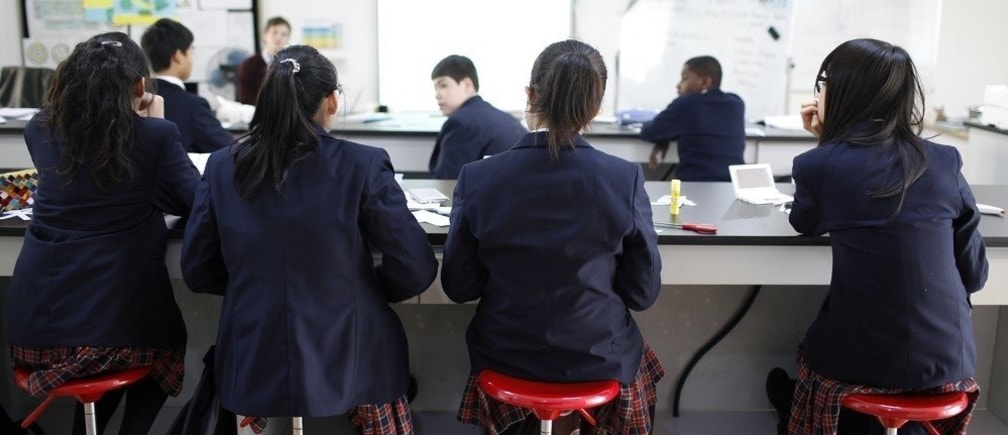
.chakra .wef-1c7l3mo{-webkit-transition:all 0.15s ease-out;transition:all 0.15s ease-out;cursor:pointer;-webkit-text-decoration:none;text-decoration:none;outline:none;color:inherit;}.chakra .wef-1c7l3mo:hover,.chakra .wef-1c7l3mo[data-hover]{-webkit-text-decoration:underline;text-decoration:underline;}.chakra .wef-1c7l3mo:focus,.chakra .wef-1c7l3mo[data-focus]{box-shadow:0 0 0 3px rgba(168,203,251,0.5);} Børge Brende

.chakra .wef-9dduvl{margin-top:16px;margin-bottom:16px;line-height:1.388;font-size:1.25rem;}@media screen and (min-width:56.5rem){.chakra .wef-9dduvl{font-size:1.125rem;}} Explore and monitor how .chakra .wef-15eoq1r{margin-top:16px;margin-bottom:16px;line-height:1.388;font-size:1.25rem;color:#F7DB5E;}@media screen and (min-width:56.5rem){.chakra .wef-15eoq1r{font-size:1.125rem;}} Education is affecting economies, industries and global issues

.chakra .wef-1nk5u5d{margin-top:16px;margin-bottom:16px;line-height:1.388;color:#2846F8;font-size:1.25rem;}@media screen and (min-width:56.5rem){.chakra .wef-1nk5u5d{font-size:1.125rem;}} Get involved with our crowdsourced digital platform to deliver impact at scale
Stay up to date:.
Education is a human right. And, like other human rights, it cannot be taken for granted. Across the world, 59 million children and 65 million adolescents are out of school . More than 120 million children do not complete primary education.
Behind these figures there are children and youth being denied not only a right, but opportunities: a fair chance to get a decent job, to escape poverty, to support their families, and to develop their communities. This year, decision-makers will set the priorities for global development for the next 15 years. They should make sure to place education high on the list.
The deadline for the Millennium Development Goals is fast approaching. We have a responsibility to make sure we fulfill the promise we made at the beginning of the millennium: to ensure that boys and girls everywhere complete a full course of primary schooling.
The challenge is daunting. Many of those who remain out of school are the hardest to reach, as they live in countries that are held back by conflict, disaster, and epidemics. And the last push is unlikely to be accompanied by the double-digit economic growth in some developing economies that makes it easier to expand opportunities.
Nevertheless, we can succeed. Over the last 15 years, governments and their partners have shown that political will and concerted efforts can deliver tremendous results – including halving the number of children and adolescents who are out of school. Moreover, most countries are closing in on gender parity at the primary level. Now is the time to redouble our efforts to finish what we started.
But we must not stop with primary education. In today’s knowledge-driven economies, access to quality education and the chances for development are two sides of the same coin. That is why we must also set targets for secondary education, while improving quality and learning outcomes at all levels. That is what the Sustainable Development Goal on education, which world leaders will adopt this year, aims to do.
Addressing the fact that an estimated 250 million children worldwide are not learning the basic skills they need to enter the labor market is more than a moral obligation. It amounts to an investment in sustainable growth and prosperity. For both countries and individuals, there is a direct and indisputable link between access to quality education and economic and social development.
Likewise, ensuring that girls are not kept at home when they reach puberty, but are allowed to complete education on the same footing as their male counterparts, is not just altruism; it is sound economics. Communities and countries that succeed in achieving gender parity in education will reap substantial benefits relating to health, equality, and job creation.
All countries, regardless of their national wealth, stand to gain from more and better education. According to a recent OECD report , providing every child with access to education and the skills needed to participate fully in society would boost GDP by an average 28% per year in lower-income countries and 16% per year in high-income countries for the next 80 years.
Today’s students need “twenty-first-century skills,” like critical thinking, problem solving, creativity, and digital literacy. Learners of all ages need to become familiar with new technologies and cope with rapidly changing workplaces.
According to the International Labour Organization, an additional 280 million jobs will be needed by 2019. It is vital for policymakers to ensure that the right frameworks and incentives are established so that those jobs can be created and filled. Robust education systems – underpinned by qualified, professionally trained, motivated, and well-supported teachers – will be the cornerstone of this effort.
Governments should work with parent and teacher associations, as well as the private sector and civil-society organizations, to find the best and most constructive ways to improve the quality of education. Innovation has to be harnessed, and new partnerships must be forged.
Of course, this will cost money. According to UNESCO, in order to meet our basic education targets by 2030, we must close an external annual financing gap of about $22 billion. But we have the resources necessary to deliver. What is lacking is the political will to make the needed investments.
This is the challenge that inspired Norway to invite world leaders to Oslo for a Summit on Education for Development , where we can develop strategies for mobilizing political support for increasing financing for education. For the first time in history, we are in the unique position to provide education opportunities for all, if only we pull together. We cannot miss this critical opportunity.
To be sure, the responsibility for providing citizens with a quality education rests, first and foremost, with national governments. Aid cannot replace domestic-resource mobilization. But donor countries also have an important role to play, especially in supporting least-developed countries. We must reverse the recent downward trend in development assistance for education, and leverage our assistance to attract investments from various other sources. For our part, we are in the process of doubling Norway’s financial contribution to education for development in the period 2013-2017.
Together, we need to intensify efforts to bring the poorest and hardest to reach children into the education system. Education is a right for everyone. It is a right for girls, just as it is for boys. It is a right for disabled children, just as it is for everyone else. It is a right for the 37 million out-of-school children and youth in countries affected by crises and conflicts. Education is a right regardless of where you are born and where you grow up. It is time to ensure that the right is upheld.
This article is published in collaboration with Project Syndicate . Publication does not imply endorsement of views by the World Economic Forum.
To keep up with the Agenda subscribe to our weekly newsletter .
Author: Erna Solberg is Prime Minister of Norway. Børge Brende is Norway’s Minister of Foreign Affairs.
Image: Students attend a class at the Oxford International College in Changzhou. REUTERS/Aly Song.
Share this:
- Share on Facebook (Opens in new window)
- Click to share on Twitter (Opens in new window)
- Click to share on LinkedIn (Opens in new window)
- Click to share on WhatsApp (Opens in new window)
Don't miss any update on this topic
Create a free account and access your personalized content collection with our latest publications and analyses.
License and Republishing
World Economic Forum articles may be republished in accordance with the Creative Commons Attribution-NonCommercial-NoDerivatives 4.0 International Public License, and in accordance with our Terms of Use.
The views expressed in this article are those of the author alone and not the World Economic Forum.
Related topics:
The agenda .chakra .wef-n7bacu{margin-top:16px;margin-bottom:16px;line-height:1.388;font-weight:400;} weekly.
A weekly update of the most important issues driving the global agenda
.chakra .wef-1dtnjt5{display:-webkit-box;display:-webkit-flex;display:-ms-flexbox;display:flex;-webkit-align-items:center;-webkit-box-align:center;-ms-flex-align:center;align-items:center;-webkit-flex-wrap:wrap;-ms-flex-wrap:wrap;flex-wrap:wrap;} More on Education .chakra .wef-17xejub{-webkit-flex:1;-ms-flex:1;flex:1;justify-self:stretch;-webkit-align-self:stretch;-ms-flex-item-align:stretch;align-self:stretch;} .chakra .wef-nr1rr4{display:-webkit-inline-box;display:-webkit-inline-flex;display:-ms-inline-flexbox;display:inline-flex;white-space:normal;vertical-align:middle;text-transform:uppercase;font-size:0.75rem;border-radius:0.25rem;font-weight:700;-webkit-align-items:center;-webkit-box-align:center;-ms-flex-align:center;align-items:center;line-height:1.2;-webkit-letter-spacing:1.25px;-moz-letter-spacing:1.25px;-ms-letter-spacing:1.25px;letter-spacing:1.25px;background:none;padding:0px;color:#B3B3B3;-webkit-box-decoration-break:clone;box-decoration-break:clone;-webkit-box-decoration-break:clone;}@media screen and (min-width:37.5rem){.chakra .wef-nr1rr4{font-size:0.875rem;}}@media screen and (min-width:56.5rem){.chakra .wef-nr1rr4{font-size:1rem;}} See all

How boosting women’s financial literacy could help you live a long, fulfilling life
Morgan Camp
April 9, 2024

How universities can use blockchain to transform research
Scott Doughman
March 12, 2024

Empowering women in STEM: How we break barriers from classroom to C-suite
Genesis Elhussein and Julia Hakspiel
March 1, 2024

Why we need education built for peace – especially in times of war
February 28, 2024

These 5 key trends will shape the EdTech market upto 2030
Malvika Bhagwat
February 26, 2024

With Generative AI we can reimagine education — and the sky is the limit
Oguz A. Acar
February 19, 2024

Reviewed by Psychology Today Staff
Education can shape an individual's life, both in the classroom and outside of it. A quality education can lay the groundwork for a successful career , but that's far from its only purpose. Education—both formal and informal—imparts knowledge, critical thinking skills, and, in many cases, an improved ability to approach unfamiliar situations and subjects with an open mind.
Some of the pressures of modern education, by contrast, are thought to contribute to the increased incidence of mental health challenges among today’s children and young adults. Examining current approaches to education—and identifying the ways in which they may be counterproductive—can help parents, teachers, and other stakeholders better support students’ well-being.
To learn more about helping kids succeed in school, see Academic Problems and Skills .
- The Purpose of Education
- What Makes Education Effective?
- How Can We Improve Education?

Scholars and philosophers have debated the purpose of education throughout history. Some have argued that education was necessary for an engaged citizenry; some felt its purpose was to promote obedience and indoctrinate youth to dominant cultural ideas; still others believed that the pursuit of knowledge was in itself a virtuous or even spiritual goal. Today, conversations around the purpose of education tend to center around child development and the economy—that is, how education can help children grow into healthy, competent adults who are able to support themselves financially and contribute to society. Some experts warn, however, that excessive focus on the economic and pragmatic benefits of education deprives the process of joy. Humans—especially children—are natural learners, they argue, and learning may be most valuable when it’s pursued for its own sake.
Education, broadly defined, is valuable for teaching children the social, emotional, and cognitive skills needed to function in society. Formal education is thought to facilitate social learning , build executive functioning skills, and allow children to explore subjects they may not naturally be exposed to. Informal education typically allows them to cultivate their own interests and learn self-direction , itself an important life skill.
Ideally, in the modern world, education will teach both the technical skills needed for future success and cultivate the critical thinking abilities that allow humans to creatively approach problems, engage new perspectives, and innovate in an ever-changing world. Whether the current system of formal education does that effectively, however, is a source of great debate among the public and policymakers alike.
Most policymakers and educational psychologists agree that some kind of formal education is necessary to function in the modern world. But many experts argue its hyperfocus on grades, testing, and following a set curriculum, rather than children’s interests, can actually be counterproductive and interfere with the natural learning process that more informal education approaches often provide. Excessively rigid schooling is also thought to contribute to heightened anxiety among children, especially those who fall behind or are otherwise non-normative.
Homeschooling —in which a child is not enrolled in a formal school, but instead is educated by their parents or with other homeschoolers—has both strengths and drawbacks. Some common benefits reported by families include increased flexibility in what is studied, the ability to pace the curriculum to a child’s needs, and a supportive learning environment. Potential cons include reduced opportunities for socialization, limited diversity in the opinions and subjects that a child may be exposed to, and an emotional and intellectual burden placed on parents, who may struggle to keep their child engaged or update their own knowledge to ensure they’re imparting useful, up-to-date information.
Grades can be valuable tools in determining which children grasp the material and which are struggling. But despite widespread myths that good grades are necessary to succeed in life , high school and college grades do not necessarily correlate with long-term success. And hyperfocus on grades can have profoundly negative effects, as students who pursue perfect grades at all costs often struggle with anxiety , depression , or feelings of burnout .
Highly-ranked colleges are widely assumed to confer lifelong benefits to attendees, including higher incomes and more prestigious, satisfying careers. But this isn’t necessarily true. Indeed, evidence suggests that, when controlling for prior socioeconomic status and academic achievement, attending an elite college makes little difference in someone’s later income. Other research suggests that the type of college someone attends has no effect on their later life satisfaction; instead, having supportive professors or participating in meaningful activities during college best predicts someone’s future well-being.

Teachers, parents, and society at large have debated at length the criteria that denote a "good" education. In recent years, many educators have attempted to develop their curricula based on research and data, integrating the findings of developmental psychology and behavioral science into their lesson plans and teaching strategies. Recent debates have centered on how much information should be tailored to individual students vs. the class at large, and, increasingly, whether and how to integrate technology into classrooms. Students’ age, culture, individual strengths and weaknesses, and personal background—as well as any learning disabilities they may have—all play a role in the effectiveness of particular teachers and teaching methods.
The idea that education should be tailored to children’s different “learning styles”—typically categorized as visual, auditory, and kinesthetic—has been around for decades. But research has not found that creating targeted lessons based on children’s learning styles helps them learn more effectively ; some has even suggested that characterizing children as having one particular learning style could be unfairly limiting, and may stop them from tackling tasks outside of their comfort zone.
Children are by nature highly active, and an inability to move throughout the day often triggers inattention and poor mood—neither of which are conducive to learning. And moving during learning, not just before or after it, has been shown to be similarly beneficial; children who are allowed to move in class learn better , research shows, paying more attention and achieving higher outcomes.
Whether homework is beneficial is the subject of debate. Proponents argue that homework reinforces lessons and fosters time management and organizational skills. Opponents argue that excessive homework has been correlated with lower scores in critical subjects, like math and science, as well as worsened physical and mental health. Most experts argue that if homework is assigned, it should serve a specific purpose —rather than just being busywork—and should be tailored to a child’s age and needs.
In general, evidence suggests that online-only courses are less effective than courses where students are able to meet in person. However, when in-person learning is not possible—such as during the COVID-19 pandemic—well-designed distance learning programs can bridge the gap. Research indicates that online programs that mix passive instruction with active practice, and that allow students to progress at their own pace, tend to be most effective.
Depression, anxiety, and other mental health disorders appear to be significantly more common in today's college students than they once were. Nearly 1 in 5 university students suffer from anxiety or depression, research suggests, and many colleges—particularly larger ones—will face at least one student suicide per year. The reasons for this are complex, experts warn, but may be due to factors including the increased prevalence of social media , the financial and academic stress of college, reduced economic opportunity upon graduation, and decreased resilience among today's youth as a result of parental over-involvement.

The world is changing rapidly, and so are children’s educational needs. While many people agree that education should prepare children for a competitive global economy, there has also been a push to recognize that children's well-being should be taken into consideration when planning curricula and structuring the school day.
To this end, parents and educators are confronting pedagogical questions such as: What is the optimal time to start school to make sure students can learn effectively—and get enough rest? How many and what kind of breaks do students need during the day? What are the best ways for students to learn, and do they differ depending on the subject being taught—or the students themselves?
In some of these areas, big changes are already taking place. Some states, for instance, are considering or have already passed laws that would delay school start times, making them more conducive to children's sleeping schedules. Other states have passed laws requiring recess, ensuring that children have access to physical activity throughout the day. These reforms, along with others, aim to protect children's physical and mental health—in addition to making them better able to focus, learn, and grow.
Many experts now believe that starting school later—typically after 8:30 A.M.—is better for children than starting earlier. This is particularly true for middle and high school children, who naturally sleep later than adults and may struggle to function if made to wake too early. Many school districts have implemented later school start times to account for this biological reality.
First and foremost, school recess provides the physical activity that is critical to a child’s physical and mental health. But recess is also an opportunity for children to socialize without (excessive) adult interference, which allows them to learn cooperation and conflict resolution skills.
Kindergarten and preschool programs are increasingly focusing on teaching children academic skills like math and reading. But evidence suggests that because children are not yet cognitively or emotionally equipped to handle most academic material, such early academic training can produce lasting harm . Some research has found that children in such programs do worse over the long term than children who spent preschool and kindergarten playing and socializing.
Children and young adults today are significantly more likely to experience mental health problems—especially anxiety and depression—than in decades past, and many will require mental health interventions at school. Evidence suggests that schools of any level can best support and help treat students with mental health disorders by proactively identifying students who need help, fostering a school culture that makes mental well-being a priority, and working to decrease stigma surrounding mental health care, both among students and their families. For students without diagnosable mental illnesses, schools can still be supportive by ensuring workloads are reasonable; providing opportunities for movement, creativity , and social connection; and reminding children, teenagers , and young adults that it's OK to ask for help.

Useful strategies for helping your neurodivergent student achieve academic success during the end-of-the-school-year slump.

We can feel inexplicably drawn to a challenging new pursuit later in life. Will you embrace a dream?

The field of critical thinking research owes Kahneman a debt of gratitude for his contributions in helping shine a light on the importance of ‘thinking slow.’

Here are steps to take to advocate for your health and transform your medical experiences.

Children who hear less complex language at home may be at a disadvantage when starting school. Interventions can help to combat inequalities in early life language development.

What if the quality of the education your child receives largely comes down to luck? This is an idea proposed by Dr. David Steiner in his new book.

Rituals decrease people’s negative responses to their own slip-ups—suggesting that rituals help us move past our inevitable mistakes whenever we perform.

As handwriting skill wanes states push back and readers respond.
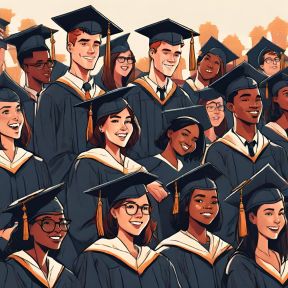
Graduating seniors know the end is near, and for many, their future plans may be uncertain. How can your program or department make graduation memorable for them?

When choosing a career, be open to learning about and exploring different alternatives, be flexible, and listen to your heart and mind as you navigate your career journey.
- Find a Therapist
- Find a Treatment Center
- Find a Psychiatrist
- Find a Support Group
- Find Teletherapy
- United States
- Brooklyn, NY
- Chicago, IL
- Houston, TX
- Los Angeles, CA
- New York, NY
- Portland, OR
- San Diego, CA
- San Francisco, CA
- Seattle, WA
- Washington, DC
- Asperger's
- Bipolar Disorder
- Chronic Pain
- Eating Disorders
- Passive Aggression
- Personality
- Goal Setting
- Positive Psychology
- Stopping Smoking
- Low Sexual Desire
- Relationships
- Child Development
- Therapy Center NEW
- Diagnosis Dictionary
- Types of Therapy

Understanding what emotional intelligence looks like and the steps needed to improve it could light a path to a more emotionally adept world.
- Coronavirus Disease 2019
- Affective Forecasting
- Neuroscience

Getting Into College , Tips for Online Students , Tips for Students , Why Go to College
Top 10 Reasons Why Is Education Important
Updated: February 1, 2024
Published: April 15, 2020

Most of us have grown up being taught the importance of education. But why is education important? Through your frustrating school years, you may have thought that it was a waste of time, or was just something that you needed to do in order to get a job. Truth be told, however, education goes so much beyond just getting a job and making your parents happy. In fact, it’s one of the most powerful tools out there.
What Is Education?
Education means studying in order to obtain a deeper knowledge and understanding of a variety of subjects to be applied to daily life. Education is not limited to just knowledge from books, but can also be obtained through practical experiences outside of the classroom.
Top 10 Reasons: Why Is Education Important?
There are many different understandings and definitions of what education is, but one thing can be universally agreed upon, which is the importance of education — and here’s why.
1. Provides Stability
Education provides stability in life, and it’s something that no one can ever take away from you. By being well-educated and holding a college degree , you increase your chances for better career opportunities and open up new doors for yourself.
2. Provides Financial Security
On top of stability, education also provides financial security, especially in today’s society. A good education tends to lead to a higher paying job, as well as provide you with the skills needed to get there. Educated and well-informed individuals also know how to use money-saving tactics. They are more likely to use coupon websites like EMUCoupon while shopping online to save their hard-earned money.
3. Needed For Equality
In order for the entire world to really become equal, it needs to start with education. If everyone was provided with the same opportunities to education , then there would be less gaps between social classes. Everyone would be able to have an equal chance at higher paying jobs — not just those that are already well-off.

4. Allows For Self-Dependency
The importance of education is evident when it comes to being self-dependent. If we are we educated, then it’s something that belongs to us, and only us, allowing us to rely on no one else other than ourselves. It can allow you to not only be financially independent, but also to make your own choices.
5. Make Your Dreams Come True
If you can dream it, you can achieve it. An education is the most powerful weapon you can possibly have, and with it, you can make all of your dreams come true. There are of course certain exceptions, depending on what you’re aiming for, but generally an education will take you as far as you’re willing to go.
6. A Safer World
Education is something that’s not only needed on a personal level, but also on a global level, as it’s something that keeps our world safe and makes it a more peaceful place. Education tends to teach people the difference between right and wrong, and can help people stay out of risky situations.
7. Confidence
Being self-confident is a major part of being successful in life. And what better way to gain that confidence than with an education? Your level of education is often considered a way to prove your knowledge, and it can give you the confidence to express your opinions and speak your mind.
8. A Part Of Society
In today’s society, having an education is considered a vital part of being accepted by those around you. Having an education is believed to make you a useful part of society, and can make you feel like a contributing member as well.
9. Economic Growth On A National Level
An educated society is crucial for economic growth. We need people to continue to learn and research in order to constantly stay innovative. Countries with higher literacy rates also tend to be in better economic situations. With a more educated population, more employment opportunities are opened.
10. Can Protect You
Education can protect you more than you know, not only on a financial level, but it can help prevent you from being taken advantage of by knowing how to read and write, such as knowing not to sign any bogus documents.
Photo by Pixabay from Pexels
Education is important for children.
Children are the future of our world, making education crucial for them. Their knowledge is what’s going to keep our world alive and flourishing.
At Childhood
During the childhood development stages, the importance of education is stronger than ever. It’s a time for children to learn social and mental skills that will be crucial for their growth and success in the future. Education at childhood also offers a chance for self-discovery and to learn about their unique interests.
The importance of education in our lives goes far beyond what we can read in a textbook. Education also provides childhood with knowledge such as how to produce artwork and make music. Education allows us to analyze what’s in front of us, and even learn from our mistakes.
Goal Building
By learning from a young age, children are given the chance to start building goals for themselves. Education means having the logic to set your mind to something and achieve it.
Importance Of Education In Society
For a modern society, education is of utmost importance. There are so many influences coming from all directions, and education can help us decipher what we should take as true, and what we should take with a grain of salt. Education can mold people into functional members of society with the right kinds of values.
Productivity
Education is needed for a productive society. Our population only continues to increase, and in turn, so do our needs. We need a strong and efficient workforce of educated people to provide us with the services we need for everyday life.
Why Is Education Important For a Nation?
The importance of education is seen in every aspect of life, and is especially crucial for the growth of a nation.
The Impact Education Has On The World
With education, people can become better citizens, knowing right from wrong, allowing for a better society where laws are followed. An educated nation knows about the importance of voting, doing so with the knowledge not blindly, but also having an understanding of what their party truly stands for. Education can also help people get jobs, which is what a nation thrives on.
Inspiring Quotes On What Education Truly Is
Why is education important, and what is it exactly? While every person has a different understanding of its true meaning, here are some of the most inspiring quotes by some legendary people.
- “Education is the most powerful weapon which you can use to change the world.” — Nelson Mandela
- “Education is the passport to the future, for tomorrow belongs to those who prepare for it today.” — Malcolm X
- “An investment in knowledge pays the best interest.” — Benjamin Franklin
- “Education is not preparation for life; education is life itself.” — John Dewey
What Are Some Other Reasons Why Education Is Important?
There are endless reasons why education is so important, especially since it also has endless connotations and meanings.
Mind And Body
Our mind and bodies are connected more than we know. With a powerful, well-educated mind, so too are our bodies.
We can not only know how to best take care of ourselves, but we can feel confident and good about ourselves, which will likely have a positive effect on our physical well-being . Education has even been proven to add years to our life . To be exact, each additional year of education was found to add as much as 1.7 years to our lives at the age of 35.
Personal Growth
The importance of education even extends itself to our personal growth. By constantly educating ourselves, asking questions and wanting to know more, we can move forward and achieve things we never imagined before.
Get To Know Yourself
Education can allow us to get to know ourselves better than ever. We can learn things about ourselves, whether it be through books, courses, or even consulting with a professional.
Photo by Burst from Pexels
Worldwide value.
Education is the best way to ensure a positive world value and view. Without a proper education, how else do we know what’s considered appropriate and how to behave?
While world peace may unfortunately seem like a far-fetched concept, with education we can get closer to this goal than we know. Education can teach us about our place in this world, and about our responsibility to humanity.
Teaches Values
Values are taught through education! Education exists far beyond the classroom or an exam. It’s taught at home, through what our parents and peers show us, and although not necessarily written down somewhere, such a teaching method is still a large aspect of what education entails.
Sharpens Your Thinking
Education is needed to think sharply and clearly!
Makes You Informed
Education makes you informed about the world around you, what’s going on and what kind of people are around you. Education can help you be more self-aware about your strengths and weaknesses, showing you were to shift your focus.
Logical Reasoning
When in an argument, if you aren’t well educated and don’t have your facts straight, then you aren’t likely to win. If you get upset about something, then being educated can also help you logically work through the situation and make sense of it, understanding all aspects.
Stay Focused
Education can help you stay focused and on track in the right direction by knowing what the right path is for you.
Allows For Innovation And Creativity
When it comes to being creative, in any way, shape, or form, the mind can only really reach its full potential if it’s been fed with the knowledge it needs to think outside the box.
Develop Life Skills
Education is the foundation of basic life skills and street smarts. While education might sound like a fancy technical term, it’s really everything we learn in life about how to best conduct ourselves from day to day.
Education can be the most freeing and empowering thing in the entire world!
Live Life To The Fullest
Truly living life to the fullest means being well-educated and holding a vast amount of knowledge about the world around us. It also means we continue to learn every day in all kinds of forms, whether it be from the people around us, newspapers, experiences, research, or traditional classes.
Breaks Barriers
Education breaks barriers between people, and allows people from across the globe to be empowered.
University of the People, a tuition-free , online university, is one powerful example of how education is being revolutionized – they offer students of all socio-economic backgrounds an equal chance at education.
Once upon a time, such a thing wouldn’t have been possible, but today such places like UoPeople have proven that these barriers truly can be broken through to receive higher education.
You Become Your Highest You
Education can allow you to become the best, fullest version of yourself, learning about what interests you, what you’re good at, becoming self-aware and conscious about the world around you. It can help you establish your place in this world, and feel complete.
Education In The Modern World
Education today is more important than ever before, and has reached new heights with new understandings of what it truly entails. Ask yourself “Why is education important?” and it will surely not be the same as anyone else’s answer.
While in modern society, holding a college degree is considered to be highly beneficial for a successful career and to be socially accepted, it is not the only means of education. Education is all around us in everything that we do, so use it wisely!
Related Articles

Why is education more important today than ever? Innovation
Eduardo velez bustillo, harry a. patrinos.
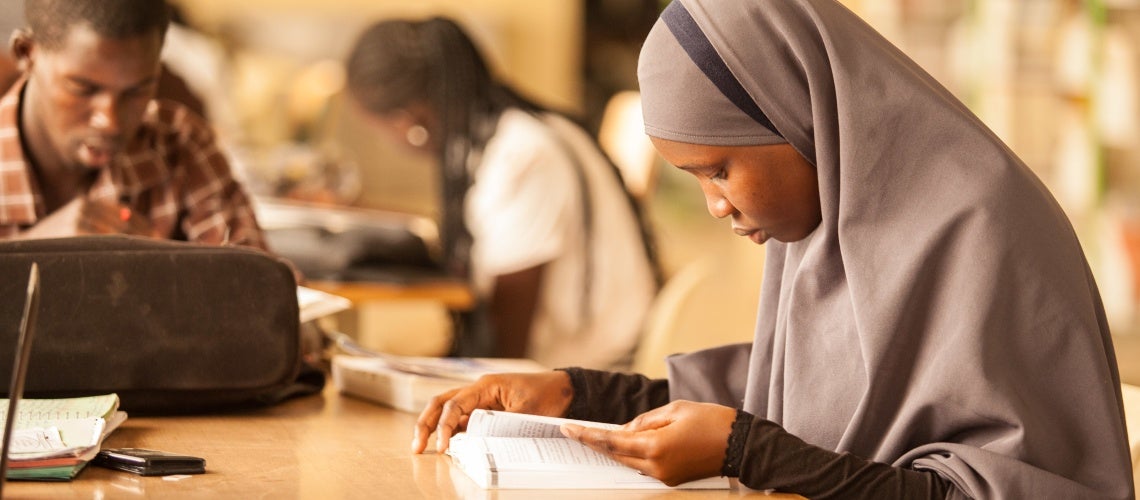
The competitiveness of an economy depends a lot on technological progress, but recent data in some countries, including not only high-income but also middle-income countries, suggests that innovation is getting harder, and the pace of growth is slowing down. A new challenge, then, is to understand what conditions are most effective in supporting innovation, so countries can support their best and brightest to advance technology and lead innovative work that helps boost economies.
Education and mobility
The main findings of status attainment research—which studies how an individual’s family background relates to her educational and occupational attainment and income—show that an individual’s status originates in the education, occupation, and income of his or her parents, in particular fathers. At the same time, the individual’s income is also explained by his or her level of education and occupation status, as described many years ago in the seminal book The American Occupational Structure by Blau and Duncan. On the other hand, economists studying human capital theory have emphasized for decades how education correlates to income and have concluded that education increases the productivity of individuals by increasing their skills, as was proposed by Gary Becker . This can be done by investing in people.
This basic model describes the process by which family status and education were converted into occupational status through educational attainment even after controlling by ability, and has implications for how we develop and implement education policy. The results of many studies show that education has a significant positive influence on the occupational and income attainment process . These findings are consistent with human capital theory, where education explains individual productivity after ability is controlled, showing that it has an independent effect on productivity . The results have been similar in developed and developing countries where access to education, including higher education, for example, still is restricted to people with low socioeconomic status.
Education, innovation and technology
Today, there is agreement that education, independent of innate ability, helps spur innovation and technology, and it contributes to productivity and economic growth. A key element in this process is that education is important to adopt the technology that produces innovation. Parental education and a person’s education affect productivity, directly or indirectly, and independently of many other characteristics. In consequence, policymakers in countries that want to remain competitive in the globalized economy need to make sure that the education system takes this into account and supports quantitative indicators (enrollments) and qualitative ones, including the number of Ph.D. graduates , the strongest education indicator of technology and innovation. In the long term, when it comes to spurring innovation, it is more important subsidize PhD students than R&D. This would help produce the sort of technology and innovation that could give us the next generation of mRNA vaccines or medicines to treat intractable diseases. It could produce the next generation of AI tools or maybe the next generation of IBM Watson .
Without fair access to education, we are constraining the possibilities for a country to develop. All countries need to ensure that everybody starts with the right steps early on and moves thru the education cycles according to their capabilities. To do this, countries should equalize opportunities so that individuals, their families, and communities will benefit. Some countries like Finland, Singapore, and Korea, for example, have done it. In a generation, they were able to break the parent-child cycle in terms of access to quality education and access to higher education.
Investing in education boosts innovation
This is important because the findings relate to how innovation and education policy affect individual career choices and aggregate productivity. Emerging studies indicate that subsidies to R&D, a typical policy to support technology/innovation, have a clear strong impact in the short term, but its effect tends to decrease in the longer term. Subsidies to education , however, have a stronger effect on technology and innovation in the long term . A challenge is how to support students to successfully complete Ph.D. programs. These students will be more successful in developing technology and innovation. The literature indicates that expanding access to basic skills, improving the quality of education, and investing in universities may do the trick. These policies help individuals who would have been innovators anyway to become more successful; and allow creative individuals who would otherwise not have become inventors to reach their potential, widening the talent pipeline .
The World Bank is contributing towards improvements in technology and by expanding support to experiences that have been successful in increasing access to higher education, such as the projects that support loans for low-income students so that they can attend higher education in certified institutions. It also supports improving research capacity at the university level, including a series of projects that supported the Millennium Science Initiative. This initiative—initially in Latin America and the Caribbean, but most recently in sub-Saharan Africa—expands doctoral and post-doctoral training to promote scientific excellence and produce better and more qualified science and engineering graduates. It also aims to produce higher quality and more relevant research for firms to utilize these outputs to improve productivity, such as the Millennium Science Initiative project in Uganda . The World Bank is also investing in highly sophisticated technology to strengthen higher education and research universities, including with the Higher Education and Research for Innovation and Competitiveness (HERIC) project in Montenegro .

Consultant, Education Sector, World Bank

Senior Adviser, Education
Join the Conversation
- Share on mail
- comments added

Search the United Nations
- Independent side events
- FAQs - General
- FAQs - Logistics
- Vision Statement
- Consultations
- International Finance Facility for Education
- Gateways to Public Digital Learning
- Youth Engagement
- Youth Declaration
- Education in Crisis Situations
- Addressing the Learning Crisis
- Transform the World
- Digital Learning for All
- Advancing Gender Equality
- Financing Education

Why inclusive education is important for all students
Truly transformative education must be inclusive. The education we need in the 21st century should enable people of all genders, abilities, ethnicities, socioeconomic backgrounds and ages to develop the knowledge, skills and attitudes required for resilient and caring communities. In light of pandemics, climate crises, armed conflict and all challenges we face right now, transformative education that realizes every individual’s potential as part of society is critical to our health, sustainability, peace and happiness.
To achieve that vision, we need to take action at a systemic level. If we are to get to the heart of tackling inequity, we need change to our education systems as a whole, including formal, non-formal and informal education spaces .
I grew up in the UK in the 1990s under a piece of legislation called Section 28 . This law sought to “ prohibit the promotion of homosexuality ” and those behind it spoke a lot about the wellbeing of children. However, this law did an immense amount of harm, as bullying based on narrow stereotypes of what it meant to be a girl or a boy became commonplace and teachers were disempowered from intervening. Education materials lacked a diversity of gender representation for fear of censure, and as a result, children weren’t given opportunities to develop understanding or empathy for people of diverse genders and sexualities.
I have since found resonance with the term non-binary to describe my gender, but as an adolescent, what my peers saw was a disabled girl who did not fit the boxes of what was considered acceptable. Because of Section 28, any teacher’s attempts to intervene in the bullying were ineffective and, lacking any representation of others like me, I struggled to envisage my own future. Section 28 was repealed in late 2003; however, change in practice was slow, and I dropped out of formal education months later, struggling with my mental health.
For cisgender (somebody whose gender identity matches their gender assigned at birth) and heterosexual girls and boys, the lack of representation was limiting to their imaginations and created pressure to follow certain paths. For LGBTQ+ young people, Section 28 was systemic violence leading to psychological, emotional and physical harm. Nobody is able to really learn to thrive whilst being forced to learn to survive. Psychological, emotional and physical safety are essential components of transformative education.
After dropping out of secondary school, I found non-formal and informal education spaces that gave me the safety I needed to recover and the different kind of learning I needed to thrive. Through Guiding and Scouting activities, I found structured ways to develop not only knowledge, but also important skills in teamwork, leadership, cross-cultural understanding, advocacy and more. Through volunteering, I met adults who became my possibility models and enabled me to imagine not just one future but multiple possibilities of growing up and being part of a community.
While I found those things through non-formal and informal education spaces (and we need to ensure those forms of education are invested in), we also need to create a formal education system that gives everyone the opportunity to aspire and thrive.
My work now, with the Kite Trust , has two strands. The first is a youth work programme giving LGBTQ+ youth spaces to develop the confidence, self-esteem and peer connections that are still often lacking elsewhere. The second strand works with schools (as well as other service providers) to help them create those spaces themselves. We deliver the Rainbow Flag Award which takes a whole-school approach to inclusion. The underlying principle is that, if you want to ensure LGBTQ+ students are not being harmed by bullying, it goes far beyond responding to incidents as they occur. We work with schools to ensure that teachers are skilled in this area, that there is representation in the curriculum, that pastoral support in available to young people, that the school has adequate policies in place to ensure inclusion, that the wider community around the school are involved, and that (most importantly) students are given a meaningful voice.
This initiative takes the school as the system we are working to change and focuses on LGBTQ+ inclusion, but the principles are transferable to thinking about how we create intersectional, inclusive education spaces in any community or across society as a whole. Those working in the system need to be knowledgeable in inclusive practices, the materials used and content covered needs to represent diverse and intersectional experiences and care needs to be a central ethos. All of these are enabled by inclusive policy making, and inclusive policy making is facilitated by the involvement of the full range of stakeholders, especially students themselves.
If our communities and societies are to thrive in the face of tremendous challenges, we need to use these principles to ensure our education systems are fully inclusive.
Pip Gardner (pronouns: They/them) is Chief Executive of the Kite Trust, and is a queer and trans activist with a focus on youth empowerment. They are based in the UK and were a member of the Generation Equality Youth Task Force from 2019-21.
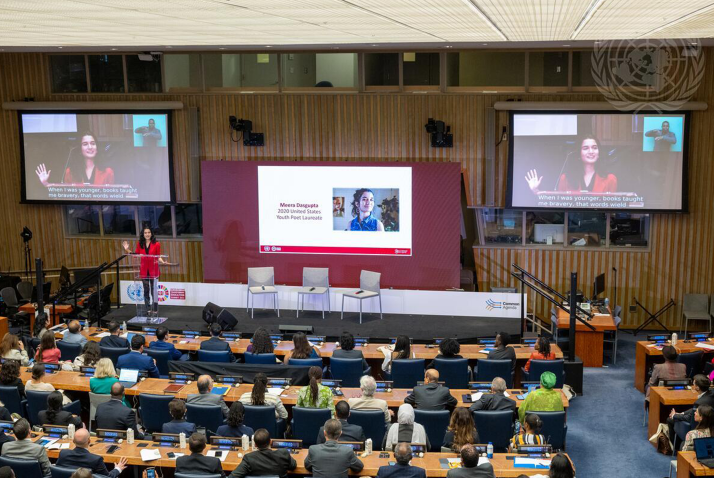
A Journey to the Stars
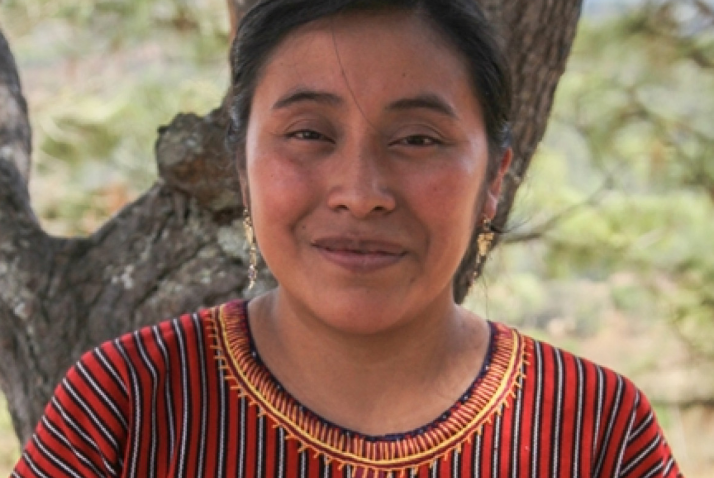
Isabel’s journey to pursue education in Indigenous Guatemala

School was a safe place: How education helped Nhial realize a dream

10 Benefits Showing Why Education Is Important to Our Society

Do you think attending school and doing projects for your college is a waste of time? If you do, you might want to reconsider that claim as education is a key part of a society’s growth and progress. When people are educated, they can significantly contribute to their families and society in various aspects and fields, thus creating a stable and stimulating community. Why is education important to society? Let’s take into account some reasons.
1. Creating More Employment Opportunities
Finding a job is not easy, especially in times of economic turmoil. You often need to compete with hundreds of other candidates for a vacant position. In addition, the lower the education level, the greater the number of people applying for the same low-paying entry-level post. However, with the right qualifications and educational background, you will increase your chances of landing a fulfilling job. Would you like to find a way to stand out from a pool of applicants? Learn, educate yourself, graduate and get as many qualifications, skills, knowledge, and experience as possible.
2. Securing a Higher Income
People with higher education and varied experience are more likely to get high-paying , expert jobs. Study hard, dedicate your time and effort to acquire knowledge and reach a high level of competence if you would like to lead a comfortable lifestyle. Your credentials are what will motivate a potential employer to choose you instead of another candidate. Studying hard throughout your school and studies shows you are not afraid of hard work and are able to fulfill your goals. Employers see this as a huge advantage as they all prefer a responsible and knowledgeable workforce. Once you graduate, you can start searching for jobs that will give you the opportunity to practice what you have learned and, at the same time, secure sufficient pay for your needs.
3. Developing Problem-solving Skills
One of the benefits of education is that the educational system teaches us how to obtain and develop critical and logical thinking and make independent decisions. When children become adults, they are faced with a lot of challenging issues – pay off your student loans, get a job, buy a car and a house, provide for your family, etc. However, if one has spent years educating themselves, they should be able to make sound decisions on these various quandaries. Not only are people able to form their own opinions, but they are also good at finding solid and reliable arguments and evidence to back up and confirm their decisions.
4. Improving the Economy

People with good academic and educational backgrounds tend to get well-paid jobs. The higher their education and accomplishments, the better employment options they get. People who grew up poor but educated themselves have high chances to transform their lives, thus contributing to a decrease in society’s poverty rates. Education helps countries grow economically since it is about getting knowledge and being able to apply it wisely to our lives and, at the same time, improving other people’s lives.
5. Providing a Prosperous and Happy Life
Education has always secured respect from society. In order to ensure a comfortable lifestyle, people should educate themselves and obtain a well-paid job to be successful and satisfied. It helps gain a better reputation and increases the chances of climbing the career ladder more easily and faster. In turn, it provides financial resources for stable lives – people can afford to buy their own house or apartment and thus secure their children’s happiness and success. Furthermore, being able to own your own home provides stability and increases self-confidence. It leads to creating a positive environment for families and communities. “Children of homeowners are 116% more likely to graduate from college than children of renters of the same age, race, and income. They are also 25% more likely to graduate from high school and have higher math and reading scores, with fewer behavioral problems,” according to research at the University of Tennessee.
6. Giving Back to the Community
How does education benefit society? Educated people understand how valuable it is to live in a stable and secure community. They are more prone to taking part in projects that help improve not only their neighborhood but society, as well. In addition, when people are able to afford their own home, they are more likely to take part not only in improving their homes but in solving local problems , as well. After all, it is quite important to get involved and give a hand to the less fortunate ones in order to build a better place for all of us to live in.
7. Creating Modern Society
Education is of key essence for modern society. One needs to learn about culture, history and other important aspects so that they would be able to contribute to modern society. Education molds people into leaders not only with knowledge about (college) subjects, but it also shows them how to lead with emotions and true values. Educated people can easily differentiate between right and wrong, thus education helps reduce the crime rate. Bad events are happening around the world – only competent leaders can help guide us down a good and right path.
8. Bridging the Borders
Digital education helps connect with people and organizations around the world. Borders are no longer there. Being able to communicate and share opinions with people from other countries and cultures, widens horizons and helps us understand and appreciate each other.
9. Creating equal opportunities

The importance of education in society has always been great as it is irrespective of caste, race, gender, religion. Educated people are treated as equals on the basis of their knowledge and competence. In addition to this, educated people are open-minded and are able to listen and accept other people’s views regardless of the fact of how different they are. Education offers a possibility to live independently and thus be free. It is our shelter against financial storms and wrong decisions.
10. Introducing Empowerment
Education is the key to turn a weakness into a strength. It offers different tools and ways to understand problems that lay ahead of us and helps resolve them. More importantly, education provides us with considerable mental agility to make the right decisions and spring into action when needed. Many types of research show that educated women can more easily stand up against gender bias and marital violence as they have improved their decision-making capabilities.
Whether it is about respect, a higher position in society and a professional environment, financial security, family stability, education provides all of these and much more. Home stability provided by owning your own home helps children who grew up in their own houses or apartments become more successful. They are more likely to graduate high school (25%) and finish college (116%). “Education is the most powerful weapon which you can use to change the world,” as Nelson Mandela said. It helps people become better citizens, get a better-paid job, shows the difference between good and bad. Education shows us the importance of hard work and, at the same time, helps us grow and develop. Thus, we are able to shape a better society to live in by knowing and respecting rights, laws, and regulations. Learning languages through educational processes helps interact with different people in order to exchange ideas, knowledge, good practices. It teaches us to live in harmony.
Are you ready to give back? Help the families from your community that need it the most. Get involved , today.
About Habitat for Humanity of Broward
Seeking to put God’s love into action, Habitat for Humanity of Broward brings people together to build homes, communities and hope. Habitat Broward offers a “hand up” not a “hand out” to families who are unable to qualify for conventional home financing but are willing to work hard to improve their family’s lives and achieve the economic empowerment of homeownership. For more information about Habitat for Humanity of Broward please call (954) 396-3030 or visit habitatbroward.org or check us out on Facebook at www.facebook.com/HabitatBroward .
- 888 NW 62nd Street, 2nd Floor Fort Lauderdale, FL 33309
- Phone: (954) 396-3030
- Fax: (954) 570-0054
- Email: [email protected]
- Hours Monday – Friday, 9:00 AM – 5:00 PM


- Ideas for Action
- Join the MAHB
- Why Join the MAHB?
- Current Associates
- Current Nodes
- What is the MAHB?
- Who is the MAHB?
- Acknowledgments
Why Is Education So Important in The Quest for Equality?
Gerald Nelson | April 14, 2022 | Leave a Comment
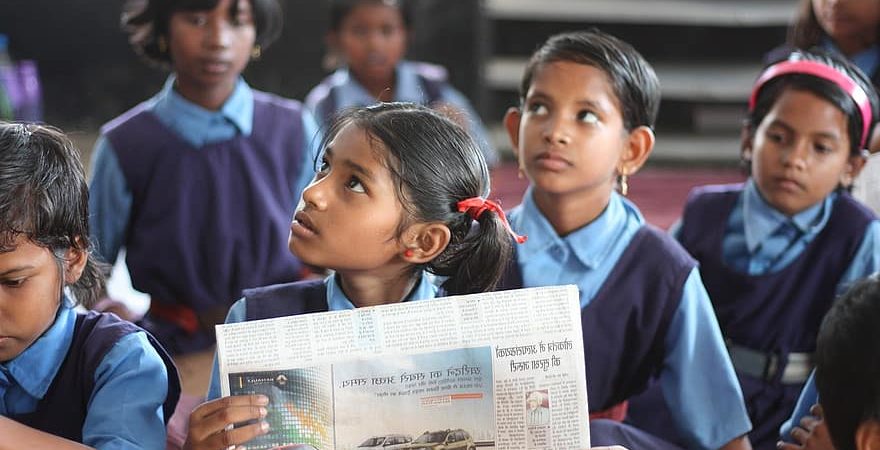
Image: Pikist
Education is vital. We can all agree on this but where we fall out of the agreement is why exactly education is so necessary for equality. Without education, there can be no progress, no development, and no improvement.
In today’s world, we are ever more aware of the issues surrounding sexism, racism, and inequality, allowing for a greater understanding of the importance of educating people to avoid these biases occurring in the first place.
What is Educational Equality and why is it necessary?
Equality isn’t always so simple. Some may assume, for example, that educational equality is as simple as providing children with the same resources. In reality, however, there’s a lot more to it than this. We will check what governments are doing to achieve this goal. What actions they are taking to advance the cause of equality? Education is crucial because it’s a toolkit for success:
- With literacy and numeracy comes confidence, with which comes self-respect. And by having self-respect, you can respect others, their accomplishments, and their cultures.
- Education is the fundamental tool for achieving social, economic, and civil rights – something which all societies strive to achieve.
Educational Inequality is usually defined as the unequal distribution of educational resources among different groups in society. The situation becomes serious when it starts influencing how people live their lives. For example, children will be less likely to go to school if they are not healthy, or educated because other things are more urgent in their life.
Categorical Educational Inequality
Categorical Education Inequality is especially apparent when comparing minority/low-income schools with majority/high-income schools. Are better-off students systematically favored in getting ahead? There are three plausible conditions:
- Higher-income parents can spend more time and money on private tutoring, school trips, and home study materials to give their children better opportunities. Therefore, better-off students have an advantage due to access to better schools, computers, technology, etc. (the so-called opportunity gap).
- Low-income schools lack the resources to educate their students. Therefore their students tend to have worse educational outcomes.
- Although the public school system is a government-funded program to allow all students an equal chance at a good education, this is not the case for most schools across third world countries – see UNESCO statistics below:
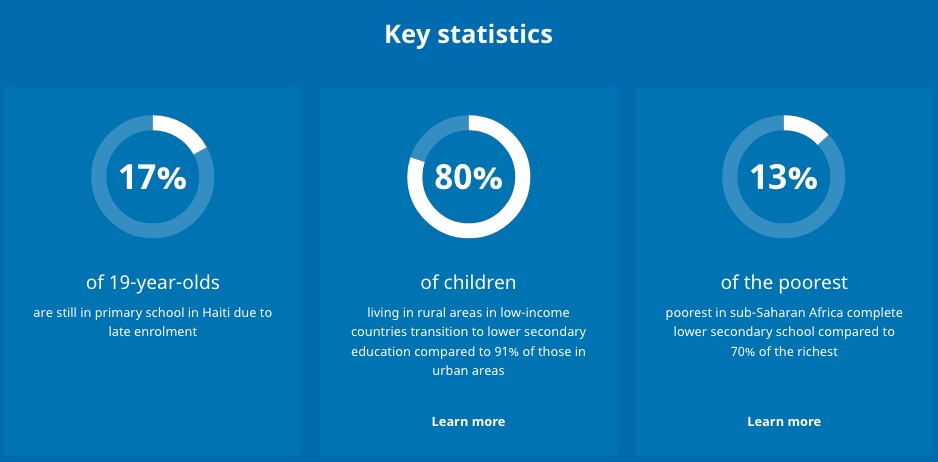
How Educational Inequality is fueling global issues
Educational inequality is a major global crisis. It has played a role in economic problems, amplified the political deadlock, exacerbated the environmental predicament, and threatens to worsen the human rights crisis. If equality in education is not addressed directly, these crises will only deepen because:
- Educational Inequality is also about race and gender . Those who are less privileged are condemned to poverty and unemployment because of a lack of quality educational resources.
- Without a sound education, people have less knowledge of the world around them or the issues facing their communities. They are less likely to vote or to pay attention to politics. This leaves them vulnerable to manipulation by those who represent narrow interests and promote fear, hatred, and violence. The result is an erosion of democratic values and an increase in authoritarianism.
- Without correction, human rights abuses will continue due to a lack of legal representation among those with no or low education levels.
- Poverty, unemployment, crimes, and health issues: A lack of education and skills forces children into poverty because they can’t get jobs or start a business. It also leaves them without hope and is one of the reasons for unemployment, lower life expectancy, malnutrition, a higher chance of chronic diseases, and crime rates.
- Limited opportunities: The most significant issue is that lack of education reduces the opportunities for people to have a decent life. Limited options increase the division of social classes, lower social mobility, and reduce the ability to build networks and social contacts. Students in poor countries also spend a lot of time working to support their families rather than focusing on their school work. These factors also worsen the upbringing of coming generations.
- Extremism: Inequality can also lead to increased violence, racism, gender bias, and extremism, which causes further economic and democratic challenges.
- Inability to survive pandemics: Unlike developed nations after COVID, underdeveloped countries are stuck in their unstable economic cycles. Inequality causes a lack of awareness and online educational resources, lower acceptance of preventive measures, and unaffordable vaccines, for example. According to the United Nations , “Before the coronavirus crisis, projections showed that more than 200 million children would be out of school , and only 60 percent of young people would be completing upper secondary education in 2030”.
- Unawareness of technological advancements: The world is becoming more tech-savvy, while students in underdeveloped countries remain unaware of the latest technological achievements as well as unable to implement them. This also widens the education gap between countries.
- Gender inequality in education: In general, developing countries compromise over funds allocation for women’s education to manage their depletion of national income. As such, they consider women less efficient and productive than men. Meanwhile, many parents do not prefer sending their daughters to school because they do not think that women can contribute equally to men in the country’s development. However, if we have to overcome this, there should be an increase in funding and scholarships for women’s education.
- Environmental crises: People are usually less aware of the harmful emissions produced in their surroundings and are therefore less prepared to deal with increased pollution levels. This also affects climate change. The less educated the children, the more likely they are to contribute to climate change as adults. This is because education is not just about learning facts and skills but also about recognizing problems and applying knowledge in innovative ways.
- A child who has dropped out of school will generally contribute less to society than a child who has completed secondary school. A child who has completed secondary school will contribute less than a child who went to university. This difference increases over time because those with higher levels of education tend to be more open-minded, flexible thinkers and are therefore better able to adapt to changing environmental conditions.
Equality in education is therefore essential for addressing international issues including economic inequality, climate change, social deprivation, and access to healthcare. Many children in poor regions are deprived of education (see chart below) which is the only way out of poverty .
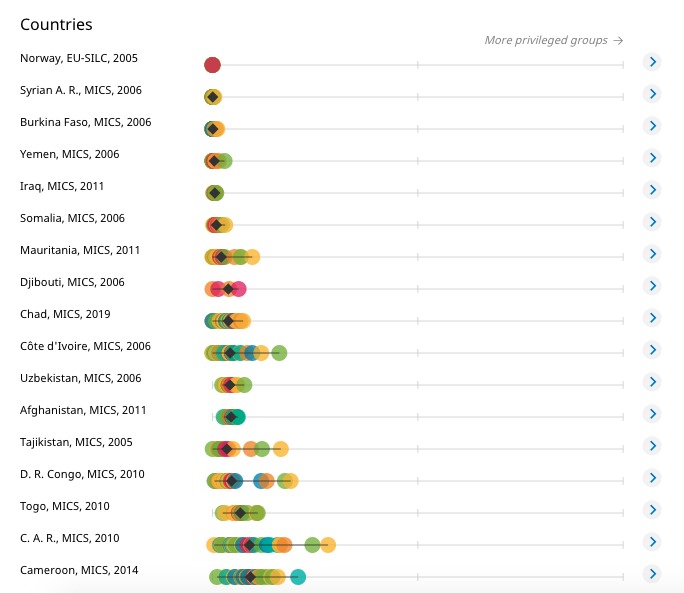
Proposed Solutions
The United Nations Development Program says that access to education is a human right, and should be individually accessible and available to all by 2030. It demands:
- International collaborations to ensure that every child has the same quality education and to develop joint curricula and academic programs. The quality of teaching methodologies should not be compromised and includes providing financial assistance and tools for equal access.
- Running campaigns to discourage race, gender, and ethnicity differences, arranging more seminars to reach low-income groups, and providing adequate financial assistance, training, and part-time jobs for sole earners.
- Modifying scholarship criteria to better support deserving students who cannot afford university due to language tests and low grades.
- Increasing the minimum wage so that sole breadwinners can afford quality education for their children.
- Schools should bear transportation costs and offer free grants to deserving kids from low-income families.
- Giving more attention to slum-side schools by updating and implementing new techniques and resources.
- Allowing students to learn in their own language with no enforcement of international languages and offering part-time courses in academies and community colleges in other languages.
Resolving educational inequality has many benefits for the wider society. Allowing children from disadvantaged backgrounds to get an education will help them find better jobs with higher salaries, improving their quality of life, and making them more productive members of society. It decreases the likelihood of conflict and increases access to health care, stable economic growth, and unlimited opportunities.
Conclusion:
It’s been said that great minds start out as small ones. To level the playing field, we need to focus on best educating our next generation of innovators and leaders, both from an individual and a societal standpoint. If we want equality to become a reality, it will be up to us to ensure that equality is at the forefront of our education system.
References:
Environmental Conscience: 42 Causes, Effects & Solutions for a Lack of Education – E&C (environmental-conscience.com)
School of Education Online Programs: What the U.S. Education System Needs to Reduce Inequality | American University
Educational Inequality: Solutions | Educational Inequality (wordpress.com)
Giving Compass: Seven Solutions for Education Inequality · Giving Compass
Science.org: Polarization under rising inequality and economic decline
Research Gate: Inequality and Economic Growth
University of Munich: pdf (uni-muenchen.de)
Research Gate: Effects-of-inequality-and-poverty-vs-teachers-and-schooling-on-Americas-youth.pdf (researchgate.net)
Borgen Magzine
United Nations: Education as the Pathway towards Gender Equality
United Nations Sustainable Development Goals – Education
This article has been edited in line with our guidelines
Gerald Nelson is a freelance academic essay writer at perfectessaywriting.com who also works with several e ducational and human rights organizations.
The MAHB Blog is a venture of the Millennium Alliance for Humanity and the Biosphere. Questions should be directed to [email protected]

The right to education
Education is a basic human right that works to raise men and women out of poverty, level inequalities and ensure sustainable development. But worldwide 244 million children and youth are still out of school for social, economic and cultural reasons. Education is one of the most powerful tools in lifting excluded children and adults out of poverty and is a stepping stone to other fundamental human rights. It is the most sustainable investment. The right to quality education is already firmly rooted in the Universal Declaration of Human Rights and international legal instruments, the majority of which are the result of the work of UNESCO and the United Nations.
- What you need to know about the right to education
- Q&A with the UN Special Rapporteur on the right to education
Understanding the right to education
Enforcing the right to education.
Developing norms and standards
in reviewing and developing education legal and policy frameworks
Responding to challenges
The start of a global conversation

Say no to discrimination in education! - #RightToEducation campaign
Monitoring tools.

For any information, please contact: [email protected]
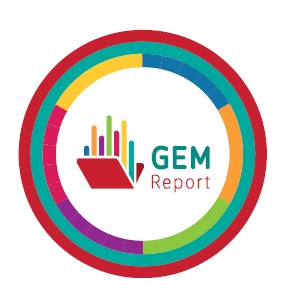
Monitoring SDG 4: access to education
Resources from UNESCO’s Global Education Monitoring Report.

U.S. Department of Education
Biden-Harris Administration Announces Additional $7.4 Billion in Approved Student Debt Relief for 277,000 Borrowers
The Biden-Harris Administration announced today the approval of $7.4 billion in additional student loan debt relief for 277,000 borrowers. These discharges are for borrowers who signed up for President Biden’s Saving on a Valuable Education (SAVE) Plan and are eligible for its shortened time-to-forgiveness benefit and as a result of fixes made by the Administration to income-driven repayment (IDR) forgiveness. This action comes as nearly 8 million borrowers have been helped by the SAVE plan. That includes 4.5 million with a $0 monthly payment.
Today’s announcement brings the total loan forgiveness approved by the Biden-Harris Administration to $153 billion for nearly 4.3 million Americans. Thanks to this Administration’s efforts one out of every 10 Federal student loan borrowers has now been approved for some debt relief. This action builds on President Biden and his Administration’s efforts to provide debt relief to as many borrowers as possible as quickly as possible.
“Today’s announcement shows—once again—that the Biden-Harris Administration is not letting up its efforts to give hardworking Americans some breathing room,” U.S. Secretary of Education Miguel Cardona said. “As long as there are people with overwhelming student loan debt competing with basic needs such as food and healthcare, we will remain relentless in our pursuit to bring relief to millions across the country.”
The debt relief announced today is broken down into the following categories:
- $3.6 billion for nearly 206,800 borrowers through SAVE. This relief will go to borrowers who are enrolled in the SAVE Plan who had smaller loans for their postsecondary studies. Borrowers can receive relief after at least 10 years of payments if they originally borrowed $12,000 or less for college. Each additional $1,000 in borrowing adds 12 more months until forgiveness. All borrowers on SAVE receive forgiveness after 20 or 25 years, depending on whether they have loans for graduate school. The benefit is based upon the original principal balance of all Federal loans borrowed to attend school, not what a borrower currently owes or the amount of an individual loan. Today’s announcement brings total relief approved underwi SAVE to $4.8 billion for almost 360,000 borrowers.
- $3.5 billion for 65,800 borrowers through administrative adjustments to IDR payment counts that have brought borrowers closer to forgiveness and address longstanding concerns with the misuse of forbearance by loan servicers. Including today’s announcement, the Biden-Harris Administration has now approved $49.2 billion in IDR relief for more than 996,000 borrowers.
- $300 million for 4,600 borrowers through fixes to Public Service Loan Forgiveness (PSLF). This update comes shortly after the Department announced new PSLF discharges a few weeks ago. The Administration has now approved $62.8 billion in forgiveness for almost 876,000 borrowers through PSLF.
“Today we are helping 277,000 borrowers who have been making payments on their student loans for at least a decade,” said U.S. Under Secretary of Education James Kvaal. “They have paid what they can afford, and they have earned loan forgiveness for the balance of their loan.”
As discussed in a recent report by the Council of Economic Advisors, the relief provided by these discharges and other actions taken by the Administration could boost short-term consumption and have positive effects on borrower mental health, financial security, and outcomes such as homeownership and entrepreneurship.
Borrowers will begin receiving emails today informing them of their approvals. Their relief will be processed in the weeks following.
New Plans to Deliver Debt Relief to Tens of Millions of Americans
Earlier this week, the Biden-Harris Administration released initial details of a new set of plans that would provide student debt relief for tens of millions of borrowers across the country. The plans would bring the total number of borrowers eligible for student debt relief to over 30 million, including the 4 million borrowers who have already been approved for debt cancellation by the Biden-Harris Administration over the past three years. The plans announced by President Biden are the next step in a regulatory process that began last summer to provide debt relief to as many borrowers as possible as quickly as possible under the Higher Education Act. The proposals would permit the following types of waivers:
- Waiving accrued and capitalized interest for millions of borrowers;
- Automatically discharging debt for borrowers otherwise eligible for loan forgiveness under SAVE, closed school discharge, or other forgiveness programs, but not enrolled;
- Eliminating student debt for borrowers who entered repayment 20 or more years ago;
- Helping borrowers who enrolled in low-financial-value programs or institutions; and
- Assisting borrowers who experience hardship in paying back their loans.
An Unparalleled Track Record of Borrower Assistance
Beyond the relief under IDR, SAVE, and PSLF, the Biden-Harris Administration has also approved:
- $22.5 billion for more than 1.3 million borrowers who were cheated by their schools, saw their institutions precipitously close, or are covered by related court settlements.
- $14.1 billion for more 548,000 borrowers with a total and permanent disability.
The updated state-by-state breakdown of borrowers approved for forgiveness under IDR and SAVE, including today’s announcement, can be found below:
The sum of individual values may not equal the total due to rounding.
- Tags: Press Releases
How Do I Find...?
- Student loans, forgiveness
- Higher Education Rulemaking
- College accreditation
- Every Student Succeeds Act (ESSA)
- 1098, tax forms
Information About...
- Elevating Teaching
- Early Learning
- Engage Every Student
- Unlocking Career Success
- Cybersecurity
Search press releases
Find by month.
- February 2024
- January 2024
- December 2023
- November 2023
- October 2023
- September 2023
- August 2023
- All Press Releases
- Biden Administration
Here’s Who Will Benefit From Biden’s $7.4 Billion in Student Loan Forgiveness

M ore than 275,000 borrowers enrolled in Saving on a Valuable Education (SAVE), public service loan forgiveness (PSLF), and others who benefit from previously announced income-driven repayment plan adjustments will see student debt relief amounting to $7.4 billion applied on their accounts, the Biden Administration announced Friday.
The decision comes on the heels of a separate announcement of the Administration’s broader student loan forgiveness program that would replace the plan the Supreme Court struck down last June. The scope of that debt relief would affect tens of millions of borrowers.
“Today’s announcement shows—once again—that the Biden-Harris Administration is not letting up its efforts to give hardworking Americans some breathing room,” U.S. Secretary of Education Miguel Cardona said in a statement. “As long as there are people with overwhelming student loan debt competing with basic needs such as food and healthcare, we will remain relentless in our pursuit to bring relief to millions across the country.”
Borrowers will receive an email from the Department of Education starting Friday informing them of the changes to their account.
Here’s who it will help:
$3.6 billion to SAVE borrowers
The student debt relief announced Friday will wipe out $3.6 billion in debt for 206,800 borrowers. “This relief will go to borrowers who are enrolled in the SAVE Plan who had smaller loans for their postsecondary studies,” according to a press release from the Department of Education. Borrowers who have made 10 years of payments and borrowed $12,000 or less will see the aid. For each additional $1,000 a borrower took out in loans, they will need to wait another 12 months to see that amount forgiven.
The relief will be based on a borrower’s original principal balance, not what a borrower currently owes, per the Education Department.
$3.5 billion through income-driven-repayment plan adjustments
Another $3.5 billion will be erased from the accounts of borrowers who benefit from the adjustments made to the income-driven repayment plan. Borrowers enrolled in an income-driven repayment plan can see their debt forgiven after 20 or 25 years of payments, depending on their loan. That adjustment, which was initially rolled out in 2022, reviews borrowers’ accounts and gives them credit for making partial and late payments.
$300 million for 4,600 Public Service Loan Forgiveness borrowers
More than 4,500 borrowers enrolled in the public service loan forgiveness plan will also see forgiveness. The debt relief is part of the Biden Administration’s larger effort to fulfill their previous campaign promise of student loan forgiveness.
“Today we are helping 277,000 borrowers who have been making payments on their student loans for at least a decade,” said U.S. Under Secretary of Education James Kvaal in a press release. “They have paid what they can afford, and they have earned loan forgiveness for the balance of their loan.”
More Must-Reads From TIME
- Exclusive: Google Workers Revolt Over $1.2 Billion Contract With Israel
- Jane Fonda Champions Climate Action for Every Generation
- Stop Looking for Your Forever Home
- The Sympathizer Counters 50 Years of Hollywood Vietnam War Narratives
- The Bliss of Seeing the Eclipse From Cleveland
- Hormonal Birth Control Doesn’t Deserve Its Bad Reputation
- The Best TV Shows to Watch on Peacock
- Want Weekly Recs on What to Watch, Read, and More? Sign Up for Worth Your Time
Contact us at [email protected]
How much can you make in the military? US officers can earn a $220K salary plus some pretty generous benefits
- Base pay is the same across the military but can increase significantly as you move up the ranks.
- Military personnel can get other tax-free allowances for housing and meals.
- Other benefits include comprehensive healthcare, discounted education, and hefty signing bonuses.

Most people don't turn to government jobs for high pay — unless they're considering joining the military.
Military service can offer a solid base pay , especially as you rank up. But the full compensation package of active military personnel goes beyond annual salary.
BI talked to various branches in the Department of Defense, including the Navy, Marine Corps, Army, National Guard, and Air Force, as well as military personnel across these branches, to decode the often complex military compensation packages.
Officers can earn a $220k salary
All active duty military personnel adhere to the same pay scale and ranking system for base pay, regardless of which branch they serve in.
The basic pay scale is mainly split into two categories: enlisted members and officers. Enlisted members are ranked from E1-E9 and officers are ranked from O1-O10.
Some military members also receive special pay on top of their base pay if they hold a military specialty or qualification, or are based in a high-risk location. For example, an E5 nuclear specialist in the military receives an extra $150 a month. In the Space Force, specialty personnel get paid in increments of $75 to $450 per month, according to a spokesperson.
An enlisted service member with an E-1 ranking receives $2,017.20 per month in basic pay, according to the DoD 2024 basic pay table. Usually, E1-E4 members are living in the barracks so they have little to no expenses.
Service members receive a routine pay increase about every two years depending on their rank, but promotions can vary and it depends on evaluations, time spent in the military, and the specific branch. For example, if you're in the Navy, you may need to take exams to get promoted. To become an officer, you have to have a college degree.
A new officer's basic pay begins at about $3,826 per month, while a more senior officer with a 0-5 rank with 10 years of service will earn $9,153 per month. Although this rate is listed in the basic pay chart, it often takes 10 or more years to reach this rank.
An O-9 or O-10 officer can make up to about $18,491 per month, which comes out to about $221,900 per year. The earliest you can make that amount is after 20 years of service if you make it to the top ranking, which is difficult to achieve.
Paychecks also include tax-free allowances
Basic pay serves as the primary compensation for service members, but they also get several tax-free allowances on their paychecks.
Basic Allowance for Housing, or BAH, is one of the most common tax-free allowances. Service members start getting BAH when they reach E-5 or E-6, get married, or have kids. BAH rates are determined by the Department of Defense and are based on housing research and market analysis. They typically increase each year.
Service members receive amounts depending on their rank, number of dependents, and cost of living in their location. For example, an E-5 with dependents in San Diego receives $3,882 per month in BAH, according to Veteran.com .
Service members outside the US may also receive an additional overseas housing allowance to incentivize military members to serve internationally.
Related stories
Military personnel may also receive Basic Allowance for Subsistence, or BAS, which is meant to offset the cost of their meals. If they qualify, enlisted members get about $460 a month in BAS, according to the Department of Defense's Finance and Accounting Service.
There are various other allowances that depend on specific circumstances, like clothing allowances for uniforms or family separation allowances for service members who serve a tour of duty.
There can be big bonuses
The US military hands out signing bonuses as a recruiting tool to accelerate and fill certain gaps.
A typical enlistment bonus can range from $1,000 or $2,000, according to an Army spokesperson.
Some programs pay up to $50,000 for enlistment bonuses offered to those entering a key specialty like cyber military intelligence, according to an Army spokesperson.
The military also pays retention bonuses that target critical specialties. Some officers can receive as high as a $245,000 bonus over a 7-year contract. Bonus amounts are dependent on qualified officer types and when they sign the contract in their careers.
The dispersal of funds depends on the service designator program, a Navy spokesperson said. While some branches may give 50% upfront and disperse the rest over five years, others may disperse it evenly within the contract period.
The majority of the bonuses are taxable, with the exception of bonuses given to service members in a non-taxable zone, like Bahrain.
Common positions that receive bonuses include pilots, nuclear sailors, and service warfare officers, according to a Navy spokesperson.
Free education, free healthcare, and a pension
The military offers large education benefits with the Post-9/11 GI Bill, which helps service members and their families pay for some of — or in some cases all of — the costs for college, grad school, and other training programs.
If you meet the 36-month requirement, you can get full tuition paid at a public school or up to $27,120.05 at a private institution. You may also be eligible for a housing allowance, according to the US Department of Veteran Affairs. You can also get up to 90% of education costs covered if you've served under 36 months.
Service members also qualify for the Blended Retirement System after 20 years of service. The retirement plan offers a traditional pension, which includes roughly 40% of pre-retirement pay calculated by multiplying 2% by their years of service by their highest 36 months of basic pay.
The system also offers a Thrift Savings Plan, which is a government-run 401(k) account, similar to a civilian retirement plan. It allows members to invest their money with a 1% contribution after 60 days of service. The government will also match contributions up to 4% of basic pay starting the second year. TSP can be accessed even if you don't complete 20 years of service.
Active duty service members, their families, and retirees also receive free medical and dental care through Tricare, the military health care program. With Tricare, military members have no premium charges for coverage, and no out-of-pocket costs for medical care or prescriptions.
Service members who serve 40 years in the military qualify for a yearly pension with their full salary.
As a service member, you'll also be eligible for a number of other benefits like discounted commissary and exchange at grocery stores and department stores. The military also covers the cost of moving if you're deployed to a different location.
Do you work in the military and want to share your story? Email the author at [email protected].
Watch: A Citadel cadet breaks down the 8 uniforms he wears at the military academy
- Main content
- Australia edition
- International edition
- Europe edition

Senior Labour figures call for ‘life-transforming’ Sure Start policy
Gordon Brown and three former education ministers say New Labour’s acclaimed early-years programme benefited millions
Veterans of the last Labour government have called on Keir Starmer to put a new Sure Start-style programme at the heart of his election manifesto after research showed its transformational impact on poor children.
Gordon Brown, the former prime minister who first announced the Sure Start initiative as Labour chancellor in 1998, was among those urging the opposition leader to prioritise the early years last night.
He said: “The wilful destruction of Sure Start and the reductions of children’s benefits after 2010 has set back opportunities for millions of children’s futures. That’s why our country desperately needs a new Sure Start.”
Three former Labour education secretaries added their voices, among them David Blunkett , who said a reinvention of the policy was “crucial to the wellbeing of so many young people in the years to come”.
The pioneering Sure Start programme, which set up “one-stop shops” in disadvantaged areas, bringing early years, health and family support services under a single roof, is widely regarded as one of New Labour’s most popular and successful policies.
Now, new research by the Institute for Fiscal Studies (IFS) has shown for the first time how the programme generated significant improvements in the academic attainment of children from low-income backgrounds years later.
Analysis published on Tuesday found that children who were eligible for free school meals and had access to a Sure Start centre boosted their GCSE results by three grades – equivalent to the difference between getting two Cs and three Ds and getting five Cs – relative to similarly poor children who were not able to access Sure Start.
The effect was most pronounced among children who benefited from Sure Start centres set up early in the programme, before 2003, which had bigger budgets and more successful outreach programmes, the IFS research found.
It also found that Sure Start increased the prevalence of support for special educational needs (SEN) among younger children, as problems were picked up and addressed early on, reducing the need for education, health and care plans later.
“These results tell us in detail what most parents already know,” said Brown, “that if you provide a supportive environment to children in their early years and invest in their futures, the results will be life-transforming. I was determined after 1997 to create Sure Start to do just that.”
Alan Johnson, who served as Labour education secretary from 2006 to 2007, said: “The creation of Sure Start was one element of Labour’s plan to eradicate child poverty by 2020 which we were on course to achieve before losing the 2010 election.
“We can’t recreate the past but we know the crucial importance of early intervention and this report emphasises the need to restore it to the forefront of Labour’s thinking whether it be on education or social services.”
Estelle Morris, who served in the role between 2001 and 2002, said the IFS results showed the importance of long-term investment and constant evaluation. “So often, policy-makers discard promising initiatives to save money and the whole cycle has to start again.
“Why would anyone want to waste time and resources constantly re-inventing the wheel when there is good strong evidence about what works? Sure Start has made a real difference not only to children’s lives but to their families and wider community.”
Lord Blunkett, education secretary from 1997 to 2001, added: “Sure Start was always one of those programmes that the public yearned for, but politicians rarely deliver. Namely, a long-term policy without short-term electoral gain, but transformational outcomes many years down the line.
“It is why I was so proud to be part of initiating the programme, and remain convinced that its reinvention is crucial to the wellbeing of so many young people in the years to come.”
Childcare and early years is expected to be a key battleground in the run-up to a general election. While the Conservatives have prioritised the roll-out of their expanded free childcare offer to help parents return to work, many in the sector are concerned about the decline in toddler development post-Covid.
The shadow education secretary, Bridget Phillipson, has said that childcare reform will be her first priority, but although she is deeply proud of Sure Start she does not believe that simply winding back the clock will give children the better future they deserve.
At its peak, total spending on Sure Start was about £2.5bn a year in today’s prices but spending has since fallen by more than two-thirds and many centres have been closed or scaled back. The government’s new family hubs programme has £300m funding to cover 2022–25 in just 75 local authorities.
after newsletter promotion
The IFS findings build on earlier research about the impact of Sure Start on future health, which found that almost a third of the upfront cost of the programme was offset by savings to the NHS through reduced hospitalisations.
On education, researchers found that access to a Sure Start centre improved children’s academic performance through primary and secondary school but the impact was most pronounced among low-income children and children from minority-ethnic backgrounds.
When considering all children – rather than just those from low-income backgrounds – all pupils who lived near and had access to a centre for their first five years performed 0.8 grades better at GCSE than those further away. For children eligible for free school meals, that increased to three grades.
Nick Ridpath, research economist at the IFS and co-author of the report, said: “Sure Start generated substantial benefits for disadvantaged children throughout their education, helping to close the disadvantage gap in attainment.
“Centres with more resources generated much larger benefits, partly because the extra funding allowed them to reach out to families who were less likely to engage with Sure Start but who stood to benefit a lot. The return on investment in integrated early-years services that are given the resources to reach those most in need can be very large.”
Neil Leitch, CEO of the Early Years Alliance, said: “This study makes clear just how vital children’s centres are, not just as a places where families can go for advice and guidance, but also as a source of vital learning opportunities that support children’s long-term development and, as this research shows, improve their life chances.
“While the government’s new programme of family hubs is undoubtedly welcome, with the current rollout limited to 75 local authorities, it’s very difficult to see how the plans will compensate for the sheer scale of children’s centre closures that have taken place over recent years.”
A Labour spokesperson said: “The last Labour government transformed young lives, and if we’re privileged to form the next government, Keir Starmer’s changed Labour party will transform lives again.
“Our mission-focused Labour government will embark on a decade of national renewal, with reducing child poverty and expanding opportunity at its heart. With Labour, children will be the healthiest and happiest generation ever.”
A Department for Education spokesperson said expenditure on Sure Start at its peak would represent a quarter of current overall spending on early years thanks to the government’s huge investment in expanding childcare.
“We continue to invest in family hubs, which now cover half of all upper-tier local authorities and provide a number of advantages over the Sure Start model, including access to support up to when children turn 19 or 25 if they have special educational needs or disabilities, a wider range of support and an evidence-led focus on the crucial 1,001 days of a child’s life.”
- Early years education
- Gordon Brown
- David Blunkett
- Alan Johnson

‘Gift of hope and confidence’: parents recall how Sure Start was a lifeline

The Guardian view on Sure Start’s success: Labour should see the latest findings as an opportunity

Charities evoke spirit of Sure Start in call for bold Labour early-years policies

Government’s £6.5m early years plan for England a ‘drop in the ocean’

Rapid help needed for Covid babies who fell behind, says former Ofsted chief

£400m for UK early years sector will ‘buy time’ but isn’t enough, experts say

Childcare sector in England must not become ‘playground for private equity’, experts say

Golden goose: why private equity is eyeing up UK essential services

Coram charity accused of ‘throttling by stealth’ nursery it helped create
Most viewed.

An official website of the United States government
Here's how you know
The .gov means it’s official. Federal government websites often end in .gov or .mil. Before sharing sensitive information, make sure you’re on a federal government site.
The site is secure. The https:// ensures that you are connecting to the official website and that any information you provide is encrypted and transmitted securely.
You are now leaving the USDA Food and Nutrition Service website and entering a non-government or non-military external link or a third-party site.
FNS provides links to other websites with additional information that may be useful or interesting and is consistent with the intended purpose of the content you are viewing on our website. FNS is providing these links for your reference. FNS is not responsible for the content, copyright, and licensing restrictions of the new site.
WIC Benefits and Services
Use the links below to learn more about WIC benefits and services.

Food Packages

Breastfeeding Promotion and Support

Revitalizing Quality Nutrition Services

WIC Works Resource System

Nutrition Services Standards

Value Enhances Nutrition Assessment

Immunization Screening and Referral

Special Project Grants

United Liberty
15 Examples of “White Privilege” You Benefit From Everyday and Don’t Even Appreciate
Posted: April 12, 2024 | Last updated: April 12, 2024

This article might be uncomfortable to read as it goes into the controversial yet critical issue of white privilege, which confers unearned advantages to white individuals across societal structures.
We will uncover how these privileges favor and fortify racial inequalities, challenging the notion of our current merit-based system. This exploration is vital for confronting and addressing the deep-seated biases that continue to shape us socially and economically.

Education Access
White individuals often have easier access to top-tier schools and educational resources, a privilege that sets the foundation for future success. This advantage extends beyond mere availability, affecting the quality of education received and opportunities for advancement. It shapes career trajectories and earning potentials, perpetuating a cycle of privilege that benefits predominantly white communities across generations.

Employment Opportunities
White individuals often experience a higher likelihood of getting callbacks for job interviews, which opens doors to better employment opportunities. This advantage is reflected in higher chances of receiving job offers, promotions, and assignments crucial for career advancement. This privilege enhances their professional growth and contributes to a broader disparity in workplace diversity and economic equity across different racial groups.

Housing and Neighborhoods
White privilege often extends to housing and neighborhood choices, where white individuals are more likely to access safer, more affluent areas with better amenities. This advantage impacts everything from property values to the quality of local schools and safety. It contributes to a cycle where wealth and benefits accumulate in predominantly white neighborhoods, reinforcing racial disparities in living conditions and future opportunities.

Legal System
White individuals often encounter more favorable outcomes within the legal system, from lighter sentencing to fewer convictions. This privilege can manifest as less scrutiny from law enforcement, better representation in court, and more lenient treatment by judges and juries. Such disparities contribute to significant racial inequities in legal experiences and outcomes, reinforcing a system where justice can appear contingent on race.

Financial Services
White individuals frequently have better access to financial services, including preferred loan rates and easier credit approval. This privilege extends to more favorable mortgage terms and broader investment opportunities, which can lead to wealth accumulation. This disparity not only enhances the financial stability of white families but also perpetuates wealth gaps between racial groups, affecting generations.

White individuals often receive higher quality healthcare and more equitable treatment in medical settings. This privilege results in better patient outcomes, more attentive service, and greater access to advanced treatments and preventive care. Such advantages are crucial, as they directly influence health disparities and life expectancy among different racial groups, perpetuating a cycle where race can determine healthcare quality and overall well-being.

Safety and Policing
White individuals generally experience safer interactions with law enforcement, characterized by less suspicion and reduced risk of police violence. This privilege means they are less likely to be profiled or targeted based on appearance, contributing to a greater sense of security and trust in the police. This disparity in treatment can significantly affect the lives and safety of people across different racial groups.

Media Representation
White individuals often see themselves positively represented across various media forms—film, television, news, and advertising. This widespread visibility reinforces social norms around success and beauty standards that predominantly feature white perspectives and stories. Such representation not only shapes public perception but also impacts self-esteem and the aspirations of individuals who do not see themselves reflected in these influential mediums.

Political Influence
White individuals typically have greater representation and influence within political systems, from local governance to national leadership. This dominance allows for a stronger voice in policy-making and legislative processes, often shaping laws and decisions that align with the interests and perspectives of white communities. This disproportionate influence perpetuates existing power structures and can limit the political empowerment of non-white groups.

Cultural Authority
White individuals often set the norms in areas like fashion, beauty, language, and cultural values, broadly accepted and emulated. This “cultural authority” dictates mainstream standards and marginalizes diverse expressions and histories. This dominance in defining cultural norms reinforces stereotypes and can obscure the rich contributions of other ethnic groups to society’s cultural tapestry.

Freedom from Racial Scrutiny
White individuals often benefit from not having their actions or achievements scrutinized through a racial lens. This freedom means that their successes are usually seen as the result of their abilities and efforts rather than their racial identity. This lack of scrutiny allows for a more straightforward path in personal and professional realms, where achievements are taken at face value without being overshadowed by racial stereotypes.

Historical Narratives
White individuals often see their history and achievements prominently featured and celebrated in educational materials and public discourse. This dominant portrayal in historical narratives can overshadow the contributions and experiences of other racial groups, reinforcing a skewed perspective of history that centers on white accomplishments. This bias shapes public perception and impacts how history is taught and understood across generations.

Social Mobility
White individuals generally face fewer barriers to social mobility and have access to networks that facilitate career and personal growth. This privilege enables them to advance more readily in their careers and accumulate wealth, contributing to enduring socioeconomic advantages. Such access often results in a self-perpetuating cycle where the initial benefits of being white lead to further opportunities and advantages, reinforcing the socioeconomic divide along racial lines.

Implicit Trust
White individuals often receive the benefit of the doubt in many settings, including social, professional, and educational environments. This implicit trust can lead to preferential treatment, such as being perceived as more competent, reliable, or honest. This advantage facilitates smoother interactions and opportunities for advancement that might not be as readily available to individuals from other racial backgrounds, reinforcing systemic inequalities.

Up Next: The Growing Support for Christian Nationalism in All 50 States (RANKED)
Click below to read an eye-opening report....
The Growing Support for Christian Nationalism in All 50 States (RANKED)
More for You
Warning for parents after Florida mom finds AirTag in son's sneaker
Vietnamese businesswoman sentenced to death in multi-billion dollar fraud case
K-Pop Singer-Songwriter Park Boram Found Dead at 30
15 Bits of Trivia That Crawled Up In Our Brains And Refuse To Come Out
Famous Roles That 16 Actors Never Want to Play Again
Hostess Has a New Treat Only Available at Walmart
Biden's message to Iran about retaliatory strike on Israel: 'Don't'
Family push for daughter's removal from hospital
Kiefer Sutherland Says No Bullying On Set Of ‘Stand By Me'
Baby penguins jump from 50-foot cliff in never-before-seen footage
78 Riddles for Adults That Will Test Your Smarts
Ron DeSantis takes on Target, and Walmart, over retail theft
Vladimir Putin says 'just three things' stop Ukraine war ending as he's 'ready for peace'
Travis Kelce graduates college with brother Jason
Ketanji Brown Jackson, Supreme Court Justice, Is Moving on From Her $2.5 Million Colonial-Style Home
4 Things You Should Never Cook in Cast Iron
I did 30 lateral raises every day for 2 weeks — here's the results
Gladiator 2 footage stuns CinemaCon with ‘ripped’ Paul Mescal and ‘sinister’ Joseph Quinn
35 Things About "American Schools" That Are Completely Normal To Americans And Incredibly Weird To Non-Americans
How far back can the IRS audit you? Here's what might trigger one.

IMAGES
VIDEO
COMMENTS
A college or university degree can have a significant impact on your quality of life, career, and income. Learn how education can create more employment opportunities, lead to career advancement, secure a better income, develop critical-thinking skills, improve self-discipline, and more.
Learn how education can improve your health, income, skills, and opportunities, as well as benefit your community and society. Discover the surprising and unexpected benefits of education that go beyond the classroom.
Education is a powerful agent of change, and improves health and livelihoods, contributes to social stability and drives long-term economic growth. GPE supports lower-income countries to transform their education systems and ensure that every child can get the quality education they need to unlock their full potential and contribute to building a better world.
Education is a core purpose of life, not just a preparation for the future. It should expand students' consciousness, capabilities, sensitivities, and cultural understanding. It should also enable them to engage with the world within them and around them, to respect diversity, to understand economic and social issues, and to become active and compassionate citizens.
How does education affect life expectancy, voting, and social status? This brief compares the social benefits of education across 15 OECD countries and 27 OECD countries.
UNESCO is the only UN agency with a mandate to cover all aspects of education and lead the Global Education 2030 Agenda. Learn how education empowers girls and women, promotes peace and sustainability, and responds to contemporary challenges.
Learn how education is a human right, a powerful driver of development, and one of the strongest instruments for reducing poverty and improving health, gender equality, peace, and stability. Find out how the World Bank Group is working to tackle the learning crisis, end Learning Poverty, and help youth acquire the skills they need for the future.
About education. UNESCO believes that education is a human right for all throughout life and that access must be matched by quality. The Organization is the only United Nations agency with a mandate to cover all aspects of education. It has been entrusted to lead the Global Education 2030 Agenda through Sustainable Development Goal 4.
Education is the process of acquiring or impartsing basic knowledge and skills to another. It helps a person develop problem-solving, critical thinking, social and economic skills. It also reduces poverty, hunger, child mortality and teen pregnancy rates. Learn more about the types, benefits and challenges of education from World Vision Canada.
Education is a catalyst for wider development goals, especially for the poor and the most vulnerable. Learn how education empowers girls and young women, and why it needs to be equitable and of good quality.
Education is not just about learning to read and do math. It can transform society through the way we interact with our environment, our values, our skills, and our communities. Learn how education can benefit society in various ways, such as climate change, social justice, economic growth, and more.
UNICEF works in 147 countries to provide quality education and skills development for children and adolescents. Learn about the challenges, programmes and impact of UNICEF's education work.
UNESCO promotes the physical and mental health and well-being of learners through school systems that integrate health education, gender-transformative comprehensive sexuality education, and safe and inclusive learning environments. Learn how UNESCO works to reduce health-related barriers to learning, improve health outcomes, and advance human rights, sustainable development and peace.
Education is a human right. And, like other human rights, it cannot be taken for granted. Across the world, 59 million children and 65 million adolescents are out of school. More than 120 million children do not complete primary education. Behind these figures there are children and youth being denied not only a right, but opportunities: a fair ...
Published since 2004, Education Pays: The Benefits of Higher Education for Individuals and Society documents differences in the earnings and employment patterns of U.S. adults with different levels of educational attainment. The report also establishes a correlation between education and health outcomes and community involvement.
Education can shape an individual's life, both in the classroom and outside of it. ... Some experts warn, however, that excessive focus on the economic and pragmatic benefits of education deprives ...
Learn how education can provide stability, financial security, equality, self-dependency, and more. Discover the benefits of education for children, society, and the world, and get inspired by quotes from famous people.
Today, there is agreement that education, independent of innate ability, helps spur innovation and technology, and it contributes to productivity and economic growth. A key element in this process is that education is important to adopt the technology that produces innovation. Parental education and a person's education affect productivity ...
The education we need in the 21st century should enable people of all genders, abilities, ethnicities, socioeconomic backgrounds and ages to develop the knowledge, skills and attitudes required ...
Education is a key part of a society's growth and progress, creating more employment opportunities, higher income, problem-solving skills, economic stability, happy life, and more. Learn how education benefits society in various aspects and fields, such as creating a stable and happy community, improving the economy, providing a prosperous and happy life, and giving back to the community.
Learn about the benefits of education for personal and social development, economic growth, and global challenges. Explore the different types of education and the facts and figures on education worldwide.
Education is the fundamental tool for achieving social, economic, and civil rights - something which all societies strive to achieve. Educational Inequality is usually defined as the unequal distribution of educational resources among different groups in society. The situation becomes serious when it starts influencing how people live their ...
The right to education. Every human being has the right to quality education and lifelong learning opportunities. Education is a basic human right that works to raise men and women out of poverty, level inequalities and ensure sustainable development. But worldwide 244 million children and youth are still out of school for social, economic and ...
The Biden-Harris Administration announced today the approval of $7.4 billion in additional student loan debt relief for 277,000 borrowers. These discharges are for borrowers who signed up for President Biden's Saving on a Valuable Education (SAVE) Plan and are eligible for its shortened time-to-forgiveness benefit and as a result of fixes made by the Administration to income-driven repayment ...
More than 275,000 borrowers enrolled in Saving on a Valuable Education (SAVE), public service loan forgiveness (PSLF), and others who benefit from previously announced income-driven repayment plan ...
The military offers large education benefits with the Post-9/11 GI Bill, which helps service members and their families pay for some of — or in some cases all of — the costs for college, grad ...
Nick Ridpath, research economist at the IFS and co-author of the report, said: "Sure Start generated substantial benefits for disadvantaged children throughout their education, helping to close ...
Background: Whole-food, plant-based (WFPB) dietary patterns can be used as a lifestyle modification to lower blood pressure and lose weight.This study aimed to observe the effects of WFPB dietary patterns and improve nutrition education in medical school. Methods: Forty-six medical students participated in the four-week Plant Plunge challenge, which consisted of a pre- and post-challenge ...
The site is secure. The https:// ensures that you are connecting to the official website and that any information you provide is encrypted and transmitted securely.
Education Access White individuals often have easier access to top-tier schools and educational resources, a privilege that sets the foundation for future success.